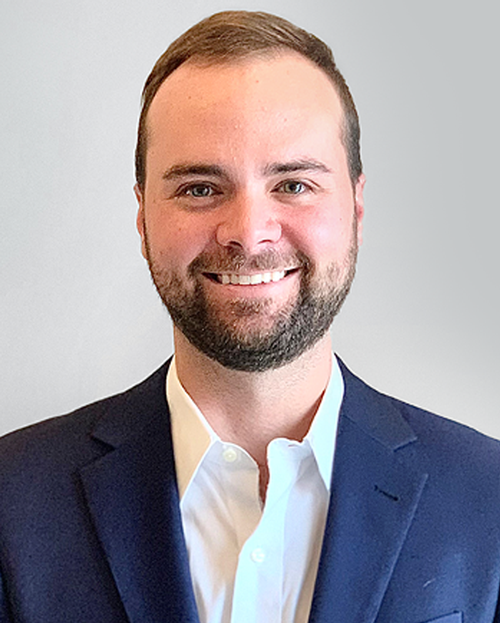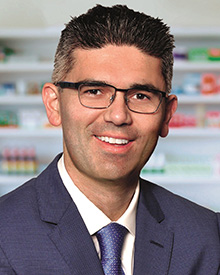PARTNER CONTENT


This long-standing series is a quick way to tap into timely and relevant issues answered by industry experts.
- View all
- Benefits
- Pensions
- Investments
November 18, 2024 | Benefits
What role does an Employee Assistance Plan (EAP) play in supporting employee health?
Answer from Michael Bradie, Vice President, Market Development and Growth, Health Solutions, Sun Life Canada
There’s so much an EAP can do! Times have changed, and today’s EAP has evolved to provide support for a broad range of concerns. We think of it as a “front door” to access confidential support for many of life’s challenges. It’s an effective way to help address the diverse needs of employees, including mental health support, women’s health-specific concerns and financial and legal counselling.
But there’s more than just personal support for employees. Our EAP also provides short-term guidance to people leaders through our manager coaching service. This support can help them address a range of workplace issues related to team members who report to them. This includes returns to work, challenging employee situations, managing employees remotely or addiction issues. As a result, our EAP can help reduce the stress and burden on your people leaders and your HR team.
The service is affordable, and it provides a clear return on investment, not just in terms of employee satisfaction, but also in lowering rates of absenteeism and improving overall company culture. Much of the support can be done virtually, helping employees remain present and productive at work, while getting the help and support they need, at a time that works for them.
Our white paper From the back room to the top shelf is a great resource for learning about how the EAP has evolved into a resource for everyday concerns – not just when an employee needs help in a crisis.


October 7, 2024 | Benefits
What are 5 things to know about business and leisure travel insurance for your employees?
Answer from Kellee Irwin, Vice-President at Orion Travel Insurance, A CAA Company
Here’s how to tell a good plan from a great one:
- Travel insurance should cover up to $5 million per traveller, per trip. Medical treatments can be expensive—especially in the U.S. A good plan should provide sufficient coverage for medical costs and an extended hospital stay.
- Travellers with pre-existing conditions shouldn’t have to satisfy a stability clause. Your benefits should suit your more mature staff’s needs. Employees under 70 shouldn’t have to disclose their medical history to their employer, and their privacy should be respected.
- Travel insurance plans shouldn’t make travellers sweat the small stuff. When someone falls ill, they should focus on getting better—not logistics. Tasks like returning rental or private cars and getting children and/or pets home should fall to customer assistance, with costs covered by the plan.
- Travel insurance plans can be customized. You should be able to choose an Emergency Medical and Non-Medical plan and Trip Cancellation & Interruption Insurance and Baggage Protection on their own, or together. There should also be options to add-on coverage for pregnancy and existing prescription replacements, request higher coverage amounts, and extend coverage to spouses.
- Travel insurance should be easy for all parties. Ensure your plan has cashless service and that there is a team to support travellers from start to finish. Your provider should be transparent and clear, so employees know what they are covered for before travelling.
Orion Travel Insurance checks all the boxes, making it’s a great place to start!


September 23, 2024 | Benefits
What is the gender health gap and how does it affect women in Canadian workplaces?
Answer from Marie-Chantal Coté, Senior Vice President, Group Benefits, Sun Life
The gender health gap is the history of women’s health needs not being met. It’s due to many factors, ranging from a lack of awareness, to stigmas, to insufficient research on women’s health. This long history of inadequate recognition and support still impacts women today – including in the workplace. When it comes to women’s health, topics including menstruation and menopause can be difficult conversations to have for some people. However, women’s health extends to other areas, including mental health, heart health, and more.
The gender health gap can result in limiting women’s workplace productivity and career progression. Due to a lack of health system and workplace supports that adequately meet their needs, many women are leaving their careers during their prime working years. It is crucial that we shed light on the impacts of the gap. Understanding why it’s a problem can help employers reduce stigma around women’s health issues and empower women to access the care they need. Our recent research shows that having support for their health is a key driver of job satisfaction for women. Employers need to prioritize this, or they may lose out on valuable talent.


September 9, 2024 | Benefits
How Are Advisors Responding to Shifts in Employee Demographics?
Answer from Andrew Brandsma, Director of Sales, Canada, National HealthClaim
In 2020, the lockdowns highlighted the urgent need to address employee mental health. Employers had limited options—primarily adding an EAP or expanding benefits, both of which impacted costs. By 2024, innovation emerged, but new challenges like fertility coverage and labour shortages also surfaced.
Group benefits still play a key role in attracting and retaining talent, but they’re no longer enough. Today’s employees want more—they value employers who offer choice and genuinely address issues like mental health and infertility.
Modern advisors now empower employees with flexible spending accounts, allowing them to allocate funds where they need them most. They offer solutions like tax-free reimbursement programs, enabling continued access to counselors even after traditional coverage is exhausted.
With Millennials, Gen Z, and soon Gen Alpha taking a more dominant role in the workforce, advisors are bringing forward-thinking benefit solutions that benefit both employers and employees alike.


May 13, 2024 | Benefits
Why is it important for employers to understand and implement return to work best practices?
Answer from Marie-Chantal Coté, Senior Vice President, Group Benefits, Sun Life
Did you know that 93% of employees said their gradual return to work was helpful? [1] Returning to work after a disability leave can be a challenging time for employees. Although returns are good news, it can also be stressful to reintegrate into the workplace. Employers play a key role in helping manage the return-to-work process. To help with this, employers can introduce some best practices. An effective transition plan can ensure employees have all the tools and resources to make their return smooth. Setting up return-to-work best practices can help employees better manage stress and maintain their work productivity. By assisting employees in their journey back to work, employers can help to lower the risk of relapse and improve their productivity in the workplace. Care may be different for every employee and understanding what employees need helps in building a productive workforce. With the right support, employers can increase the success of employee returns. This means employees who feel happier, healthier and more engaged at work.
[1] Healthy Returns, Supporting employees who have returned to work after a disability leave, a joint research report with Ipsos, Sun Life, 2024


April 8, 2024 | Benefits
Why should employers prioritize comprehensive travel insurance coverage as part of their employee benefits package?
Answer from Kellee Irwin, Vice-President at Orion Travel Insurance, A CAA Company
For most families, vacation time is the highlight of the year - a chance to escape the hustle of everyday life, relax, and make unforgettable memories. However, what happens when those precious moments turn into unforeseen medical emergencies?
Recently, a family vacation took an unexpected turn when their youngest member fell ill and required immediate surgery while aboard a cruise. The medical expenses, which included repatriation and treatment costs, exceeded $54,000 CAD. Fortunately, their travel insurance afforded them extensive coverage, providing crucial financial support when it was most needed.
Unfortunately, that’s not always the case.
A recent Orion survey of travelers under age 65, highlights a 19% increase of respondents who rely on their employee benefits or credit cards for travel insurance (compared to 2017). However, many are unaware of the hidden exclusions and lifetime limits that can leave them vulnerable during times of need. This provides an opportunity for employers. Including comprehensive travel insurance coverage as part of your employee benefits package not only provides employees with peace of mind and shields them from unforeseen financial burdens but also fosters a sense of security and support when they need it the most.
In critical moments, the value of reliable travel insurance cannot be understated. Comprehensive travel insurance coverage in the employee benefits package is an invaluable asset for both employees and employers. Empower your employees with the assurance of comprehensive coverage, and ensure their well-being is safeguarded at all times.
Orion Travel Insurance is expanding into the employee benefits market to protect Canadian employees with the same dedication to safety they have come to know from CAA. As an organization that consistently demonstrates its expertise, reliability, and outstanding level of care, it’s possible for travel insurance to strengthen trust between employers and employees, which is the best competitive edge employers can provide to the employee experience.


March 18, 2024 | Benefits
How can employers support women going through the menopause transition?
Answer from Marie-Chantal Coté, Senior Vice President, Group Benefits, Sun Life
There's so much employers can do. When it comes to women's health, including menopause, there's often the barrier of stigma. This stigma can make it challenging for employees to discuss topics such as menopause, and also seek the care they need. Did you know that 67% of women wouldn’t feel comfortable speaking to their supervisor about their symptoms? [1] This is where employers can step in to show their allyship.
Employers can start building in the listen, learn and act framework into their workplace health strategy. This is a great starting point to help break down barriers. Listening helps in understanding the pain points in how women's health issues like menopause affect day-to-day living. By recognizing roadblocks, employers can work with their group benefits provider to learn about benefit plan solutions. Finally, employers can act by including effective solutions and sharing resources to encourage further learning.
Solutions include revisiting benefit plan design, providing communities for networking, flexible work arrangements, education sessions and improving the office environment. The report Menopause and Work in Canada and the Menopause Inclusive Playbook, from the Menopause Foundation of Canada, are great resources. They can help employers understand the challenges women may face and how employers can take action to build a more menopause-inclusive workplace.
[1] Menopause and Work in Canada, Menopause Foundation of Canada, 2023


March 4, 2024 | Benefits
How can genetics help employees understand and act on disease risks?
Answer from Corissa Androich, Senior Program Manager and Genetic Counsellor at TELUS Health Care Centres.
According to the 2023 Benefits Canada Healthcare Survey, 39% of employers are interested in adding genetic testing for disease risk to their benefit plan. [1] Genetics holds great potential to help employees on their health journeys, particularly in identifying personalized risks for conditions such as diabetes, cancer and heart disease, among others, which may lead to changes in screening, treatment and lifestyle.
For example, consider a scenario where someone has been found to have a result on their genetic testing associated with a high risk of breast cancer. They can work with their healthcare team to take steps to reduce breast cancer risk, which may include:
- Increased screening measures
- Consideration of medication to help reduce their risk of developing breast cancer
- Measures such as surgery to lower risk further
- Lifestyle changes to complement medical management, such as a healthy diet and regular exercise
- Personalized treatments based on their genetic information if they do develop cancer
Employers incur estimated indirect costs as high as $23,987 per employee diagnosed with cancer every year.[2] For diabetes, the rising cost of drugs and devices led to this condition ranking first in drug categories by eligible amount in 2023.[3]
Given these trends, genetics holds promise for insights today that can lead to a healthier workforce tomorrow. Learn more about TELUS Health’s Genetics Program.
[1] Benefits Canada Healthcare Survey, 2023.
[2] The Indirect Cost Burden of Cancer Care in Canada: A Systematic Literature Review. Applied Health Economic Health Policy. (2020). https://www.ncbi.nlm.nih.gov/pmc/articles/PMC8060233/
[3] 2023 Drug Data Trends & National Benchmarks report, TELUS Health.


December 4, 2023 | Benefits
Using artificial intelligence: how to protect clients, members and partners?
Answer from Véronique Tremblay, Data Scientist Responsible AI Expert at Beneva.
A new business risk, the unsupervised use of artificial intelligence (AI) can compromise the personal data of our clients, members and partners. And did you know that AI may discriminate against certain groups based on algorithmic bias?
These are important reasons for Beneva to focus on the responsible use of AI.
To address the risks, our Artificial Intelligence and Advanced Analytics team has developed a framework based on the Montreal Declaration on Responsible AI. The team takes equity, diversity and inclusion into consideration in its artificial intelligence processes and is developing tools to avoid inequities in its algorithms.
Plus, it’s important for us that all data scientists using AI at Beneva have access to a code of conduct to govern their work.
We are also educating our employees about the use of generative AI models, such as ChatGPT. One challenge: prevent the sharing of confidential information through the platform. A directive on generative AI use is in the works.
In our organization, AI allows us to be more efficient, particularly when it comes to detecting group insurance fraud and quickly processing claims. So it’s essential for us to keep this technology as a tool in the hands of responsible human beings.
This sector is evolving at hyper speed. All of our best practices help to better protect our clients, members and partners as we want - and have - to do!


November 27, 2023 | Benefits
What key questions should you consider about your Travel Insurance Employee Benefits?
Answer from Kellee Irwin, Vice-President at Orion Travel Insurance, A CAA Company
The pandemic has increased Canadians’ awareness of the importance of having a comprehensive travel insurance plan that will have their back when they need it. Employees are asking for better protection, providing employers with the opportunity to evaluate if their current employee travel insurance program is offering the best protection.
Here are some questions to consider:
- Are you offering your employees comprehensive coverage when they travel? Review the coverage amounts and exclusions that could cause the employee to be out-of-pocket. If only providing emergency medical travel insurance, consider adding trip cancellation and interruption insurance.
- Does the product offer direct billing with international medical facilities, in the event they must seek medical treatment while they are away?
- Would the employee understand their travel protection? Transparency and simplicity are key to ensuring employees feel assured and confident.
- Do you have confidence that your travel insurance provider will take care of your employees in their time of need abroad?
With more and more employees prioritizing travel post-pandemic, travel insurance needs to play a much bigger role than as an add-on to a benefits package. Travel insurance is now truly becoming a key enabler in building and sustaining the new employee experience.
Orion Travel Insurance has ventured into employee benefits to protect Canadian employees with the same dedication to safety they have come to know from CAA. As an organization that consistently demonstrates its expertise, reliability, and outstanding level of care, it’s possible for travel insurance to strengthen trust between employers and employees, which is the best competitive edge employers can provide to the employee experience.


November 20, 2023 | Benefits
How can a focused approach to disability management help companies better support employees with a return to health and work?
Answer from Olivier Pagé, Director, Group Disability Management Operations at Medavie Blue Cross
In Canada, one in five individuals experiences mental health issues each year,[i] becoming the primary cause of approximately 30 per cent of short- and long-term disability claims, and representing 70 per cent of total disability costs.[ii] The economic impact stands at $51 billion annually, covering health expenses, reduced productivity, and diminished quality of life.[iii]
As the incidence of mental health-related disability claims grows, employers face multiple direct and indirect impacts. To address this reality, fostering a workplace culture that promotes open conversations on mental health and overall well-being is crucial.
Early intervention and prevention play key roles in reducing the frequency and severity of illnesses, potentially preventing employee absences. Data from Medavie Blue Cross reveals that prioritizing proactive case management and early intervention can reduce mental health claims transitioning from short-term to long-term disability by up to 20 per cent. By integrating various types of diagnostics, we could see up to a 33 per cent reduction in transition to long-term disability.
For employees requiring time off, a focused approach to disability management can support a successful return to health and work, consisting of:
- Integrating evidence-based mental health support within health plans, pharmacy benefits, and disability coverage.
- Providing timely access to proactive support, including a range of health care professionals, to help reduce wait times.
- Offering responsive, flexible and inclusive solutions tailored to the employer working population.
- Being open to accommodation and enabling personalized return-to-work plans for a smoother reintegration into the workforce.
[i] CAMH. Mental illness and addiction: facts and statistics. Retrieved October 26, 2023 from https://www.camh.ca/en/driving-change/the-crisis-is-real/mental-health-statistics
[ii] Mental Health Commission of Canada. Workplace Mental Health. Retrieved October 26, 2023 from https://mentalhealthcommission.ca/what-we-do/workplace/
[iii] CAMH. The crisis is real. Retrieved October 23, 2023 from https://www.camh.ca/en/driving-change/the-crisis-is-real#:~:text=All%20in%2C%20the%20economic%20burden,health%2Drelated%20quality%20of%20life.
November 13, 2023 | Benefits
How do you keep in touch with employees who are on disability leave?
Answer from Daniel Dufour, National Senior Advisor, Best Practices, Special Projects, and Health Continuum Support at Beneva
Whether the disability is psychological or physical in nature, your organization must stay in contact with employees, barring exceptional situations like strained relationships. The manager’s role is to help them get better and foster a positive return to work. After all, a person on disability leave is still an employee. So, maintaining contact starting on day 1 of their leave is part of the best practices. The purpose of this is to build trust and rapport.
Avoiding long periods of silence is a good practice because you’ll both be working together again eventually. Helping the person get past their shame, guilt or fear of judgement will reduce their return-to-work anxiety.
This approach requires adequate preparation, which is why Beneva provides specialized tools and training to its clients. Moreover, asking open questions ensures that the person is referred to the right services. This will help prepare a sustainable return to work.
It’s also best to avoid asking the person how they are doing. Although the intention is good, it could force the person to talk about their medical condition, which is not the point. You’re there to provide support—you’re a manager, you’re not a therapist.
Finally, preparation is key for a successful return to work. Understanding the policies and services offered by the company or the group insurance plan will allow you to accompany your employee throughout this difficult period.


October 30, 2023 | Benefits
What strategy does Beneva use to put people first?
Answer from Laëtitia Kapps, Director – Governance, Performance, and Human Capital Development at Beneva
First and foremost, Beneva gets all its teams involved. In fact, the company recently organized an unprecedented event called The Great Consultation.
What is The Great Consultation?
It’s the consultation of all 5,400 of the company’s employees, through workshops held from June to August 2023. A total of 500 spokespersons from each workshop then gathered at a special large-scale corporate activity to discuss their findings. It’s the results of these findings that will help fuel the company's strategic planning.
Beneva is driven to do this because of its mutualist and caring values, the same core values that it wants to make visible to all. The ultimate goal of such an activity is to empower employees, give meaning to their work and motivate them to be part of something bigger than themselves.
This co-construction with employees is also a testament to the company's strong social dialogue and inclusive approach. It allows Beneva not only to better connect with its clients and partners, but provide them with personalized, caring service.
Finally, an event like The Great Consultation sets up the ideal conditions for employees to understand the issues that the company is facing. It opens lines of communication. It instills a climate of trust. It encourages employees to work together to find solutions. With engaged employees, we can build the future.


October 23, 2023 | Benefits
Why is Travel Insurance more relevant than ever when it comes to the Employee Benefits experience?
Answer from Kellee Irwin, Vice-President at Orion Travel Insurance, A CAA Company
Since pandemic restrictions have lifted, we have seen a surge in Canadians travelling. Part of this is due to pent up demand but it also because the way people live, work and travel has changed.
- Due to impacts of COVID-19, people are more likely to spend money on experiences, like travel.
- New work models like remote and hybrid are here to stay, allowing many workers with the freedom to travel more.
- Employees are looking for greater work-life balance, and they are using their personal time off to travel and/or blend work and leisure travel.
However, travel has also become more complicated and expensive. Between flight delays, airport disruptions, and rising medical costs in countries like the US and Mexico, Canadians are also much more aware of the importance of having a comprehensive travel insurance plan that will have their back when they are at their most vulnerable.
This is why travel insurance now needs to play a much bigger role in a benefits package. From the Orion Travel Insurance perspective, providing a “traveller-centric” travel insurance policy within a benefits package can help build trust between employer and employee as it demonstrates that travel is valuable for their well-being. And when employees feel valued, assured, and protected, it can translate to reduced impact from disruptions and a competitive advantage for employers because employees are healthier, happier, and safer. That’s what we, at Orion, like to call a “win-win”.
Orion Travel Insurance is expanding into the employee benefits market to protect Canadian employees with the same dedication to safety they have come to know from CAA. As an organization that consistently demonstrates its expertise, reliability, and outstanding level of care, it’s possible for travel insurance to strengthen trust between employers and employees, which is the best competitive edge employers can provide to the employee experience.


October 2, 2023 | Benefits
How is Beneva currently handling major claimants and the need to control the cost of prescription drugs?
Answer from Sandra Demers, Pharmacist Director – Pharmaceutical Expertise and High Cost Drug Management, Beneva
The patient always come first and is at the core of our decision-making. This is why we’ve assembled a team of experts to ensure prescription drugs are used appropriately and their costs are better managed. As mentioned by the Canadian Drug Agency Transition Office, “appropriate use refers to patients receiving medications appropriate to their clinical needs, in doses that meet their individual requirements, for an adequate period of time, in order to provide the greatest possible benefit, and at the lowest cost to them, their community, the health system and the broader environment.”
Sound management of drug costs includes various initiatives such as:
- A robust and efficient preauthorization program
- Optimal coordination of benefits with existing government programs
- Step therapy
- The use of biosimilars
- Product Listing Agreement
It is also important to act at various times throughout the care continuum to make a real impact with our insureds who need specific types of support.
We propose two options for plan sponsors:
- Our Preferred Pharmacy Network (except in Quebec and Alberta) ensures the sustainability of the plan by reducing the cost for preauthorized drugs, and offers support and assistance by pharmacists to major claimants to ensure an adequate framework
- Through our Support for Speciality Medications Program, our team of nurses can provide assistance to plan members who submit claims for high cost drugs.
We’re also focusing on prevention and offering services that increase access to care, such as telemedicine and an Employee Assistance Program (EAP).
Lastly, it’s important to note that major claimants are people who have specific health issues. Kindness, a pleasant customer experience and tailor-made tools (e.g. a tool that compares drug prices across pharmacies) simplifies their journey toward better health.
*The Canadian Drug Agency Transition Office. Interim Report Addressing Appropriate Use of Prescription Medicines in Canada. An Interim Report from The Appropriate Use Advisory Committee. Health Canada 2023.


June 26, 2023 | Benefits
What kind of impact has biosimilar switching policies had on group insurance plans, and what can we expect in the future?
Answer from Martin Bélanger, Managing Director, Payor Solutions, TELUS Health
Thanks to data from plan sponsors detailing the claim activities of insured Canadians in 2022, the newest annual TELUS Health Drug Data Trends and National Benchmarks Report has provided excellent insights into the growing impact of biosimilar switching policies on cost trends. At first glance, we note that the savings realized by switching to less expensive biosimilars have been mostly offset by growth in higher-cost, second- and third-line therapies for diabetes. The result has been moderate overall increases in spending by private drug plans over the last three years, but with renewed potential for savings in 2023 and 2024.
The proportion of biosimilars in the biologics category give us important hints of what is to come. B.C. was the first province to launch a switching policy in 2019, and as of December 2022, biosimilars accounted for 64.7 per cent of claims for all biologics in the province. Similarly dramatic results occurred in Quebec, where the share grew to 38 per cent by the end of April 2022. By the end of that year, in lockstep with B.C., their share reached 64.8 per cent.
These policies have had a ripple effect on private drug plans, where sponsors have followed the lead of public payors in biosimilar switching. It should also be noted that other strategies exist which drive savings for plan sponsors but do not show up when looking at biosimilar uptake, such as Product Listing Agreements. Nationally, provincial switching policies have translated to significant growth of biosimilars’ share of claims in the biologics category from just 4.2 per cent in January 2019 to 32.0 per cent in December 2022. This will likely accelerate in 2023 and 2024, as remaining provinces and territories complete their transition periods.
With more than 20 years of experience, Martin Bélanger, Managing Director, Payor Solutions at TELUS Health, is an executive in the workplace benefits space supporting digital health & insurance management sectors. He is focused on leveraging technology for private and public sector payors. For more details and other key findings from the 2023 TELUS Health Drug Trends Report, visit www.telushealth.com/drugtrends2023.


December 19, 2022 | Benefits
Does our National and Provincial healthcare coverage do enough to solve for the infertility crisis in Canada?
Answer from Sonia Singh, VP of Sales in Canada for Progyny.
1 in 6 couples in Canada today are struggling with infertility. Despite being a country with excellent healthcare, infertility continues to be on the rise, doubling since the 80s and becoming more prevalent than diabetes, asthma, or depression.
In fact, studies show the personal and physical nature of infertility creates ripple effects that compound negatively on a person’s overall wellbeing; 1% of women and 15.3% of men dealing with infertility meet the criteria for a Major Depressive Disorder, and 70% go into debt, adding undue stress to an already difficult journey. With such dire need to support fellow Canadians struggling with infertility, you would think National and Provincial Healthcare would provide the necessary benefit.
But the truth is, fertility is not covered under National Healthcare, and only 6 provinces in Canada offer support. Even when support is covered, it’s limited, with long waitlists and complex restrictions that make it challenging to qualify, perpetuating inequities that already exist among marginalized communities like LGBTQ+, BIPOC, and single parents by choice.
Data shows access to financial, mental, and physical support are the buildings blocks of effective fertility benefits. When provided this access, families experience 25% fewer miscarriages, and 27% higher successful delivery rate, meaning healthier pregnancies, healthier babies, and reduced financial burden for employees and employers.
Companies who want to be an organization of change in Canada and embody the diverse culture that attracts the best talent have a real opportunity to consider providing differentiated support to the fertility community through a comprehensive fertility solution.
Sonia Singh is VP of Sales in Canada for Progyny, the first and only comprehensive fertility solution to be available in Canada and is proven to consistently deliver superior outcomes that change lives and cost savings that protect budgets. For questions or more information, reach out to Sonia at Sonia.singh@progyny.com or visit go.progyny.com/canada


December 12, 2022 | Benefits
How did Beneva ensure the success of its biosimilar transition policy?
Answer from Christian Yared, Pharmacist, D- Pharmaceutical expertise and high-cost drug management at Beneva.
While innovation through biologic drugs has changed modern medicine, it has also led to rising drug costs. To remain sustainable, drug plans have adopted cost-control measures, such as prior authorization programs.
The arrival of biosimilars - highly similar versions of reference biologics that cost less - on the Canadian market was expected to lead to significant savings on drug plans. Unfortunately, there were obstacles to their adoption which greatly slowed down their uptake.
Since we put people first at Beneva, as soon as major provinces announced their biosimilar transition initiatives, we moved in the same direction.
First, we decided to adopt a pan-Canadian vision for our policy, to simplify our offering while ensuring optimal coordination with available public drug plans.
Next, to maximize customer experience, communication became the focal point of our efforts. This meant being transparent with our clients and partners, and providing educational material such as webinars and online FAQs.
Finally, we believe that ensuring a good patient experience by supporting them through this change also led to its success. To that end, a transition period that provided those impacted with sufficient time to adapt, coupled with online help and transparent exemption criteria, plus the involvement of our internal drug management team, made the transition process a satisfying experience.
We therefore proudly look back on this achievement and look forward to the positive impact it will have in keeping our drug plans sustainable while this policy is set to evolve with the expansion of the biosimilar market.


November 28, 2022 | Benefits
How does Beneva set itself apart through its caring approach?
Answer from Martin Robert, Executive Vice-President and Leader for Talent, Culture and Communication at Beneva.
At Beneva, we opted to put people first. We want insurance to focus on people, make it more accessible and simple, and make it about what matters to them most. We’re obviously pursuing business objectives, but we want to do it for the benefit of a world where diversity, differences and the well-being of society are also taken into account.
For years now, people's psychological health and well-being have been a priority for us. The pandemic and the uncertainty it brought caused us to focus more on our health. It turns out that nearly one third of Canadians say they experienced a high level of anxiety, which is four times greater than before the pandemic began.1
That was enough for us to decide what our philanthropic approach would focus on. We decided to tackle the growing challenge of anxiety.
We wanted to do this one concrete step at a time, by taking action across many fronts: raising awareness among people and companies, supporting research in the field but also, the research organizations themselves.
We hope this will result in better access to specialists and concrete tools for our society, customers and employees. We also ensure that this is reflected in our corporate insurance and health offers.
That’s why we developed partnerships with York University and Anxiety Canada. Research and accessibility to resources and reliable anxiety prevention and management programs will have a tangible impact on the well-being of the community.
Beneva’s goal is to demystify anxiety and thereby provide a world of caring benefits to its people.
1 1. Dozois, D. J. A., & Mental Health Research Canada. (2021). Anxiety and depression in Canada during the COVID-19 pandemic: A national survey. Canadian Psychology/Psychologie canadienne, 62(1), 136-142.


November 7, 2022 | Benefits
With burnout on the rise, how can employers best support employee wellbeing in 2023?
Answer from Daniel Martz, VP & President, Virtual Care, TELUS Health
As we head into 2023, employees will continue to be impacted by the effects of the global pandemic and ongoing changes to hybrid, remote and onsite working arrangements. Employers cannot stand by idly and wait for this to pass but rather, they can play a more active role in supporting staff health and wellness.
A TELUS Health study conducted with the Conference Board of Canada identified an 83% gap between the extended health and wellbeing benefits Canadian employees have and what they want from their employer. Another recent survey also found that 77% of Canadians would consider changing jobs for better wellbeing support. This means there is a significant opportunity for organizations to improve on the benefits they currently provide. What can fill this gap?
Proactive health supports, in the form of wellbeing benefits, promote regular, ongoing engagement as this type of benefit is designed to nudge and support daily behaviours. By empowering employees with the tools to embrace new habits, employers have the potential to help improve health outcomes while demonstrating compassion by supporting employees in their day-to-day lives.
The time for transformation in employee benefits is urgent. Employees have faced increasing challenges over the past several years, both professionally and personally, and these have shaped the trends dominating HR conversations: burnout, the “Great Resignation” and “quiet quitting.” Developing a wellbeing strategy and providing tools that promote proactive wellness puts the power in employee’s hands to help them see improved health outcomes and better navigate these uncertain times.
1 Séverine Degallaix, 77% of employees are ready to leave to improve their well-being”, Jobs.ca, February 12, 2020, https://www.jobs.ca/77-employees-ready-leave-improve-well/
October 31, 2022 | Benefits
How can plan sponsors contribute to a health culture?
Answer from Sunil Hirjee, Vice President Group Sales & Partner Experience, Beneva
As a result of the recent pandemic, organizations are much more aware of the role and opportunity they have to impact their health culture. Employers were uniquely exposed to gaps and saw that there are many different aspects to health –social, physical, financial, or mental. The focus shifted from just a benefits plan to what working conditions and support programs are in place. Measuring the effectiveness of their total health offering, employers are increasingly surveying and seeking feedback from their employees.
While all these pieces are coming together to help bring about a health culture, an important shift for employers to take is that of creating clear awareness of available services by effectively communicating throughout the organization. Not just a top-down approach, an impactful way to address health gaps at any level is to adequately train and equip front-line managers with the knowledge of, and access to the right tools needed depending on the situation. No longer about gaps in performance, an engrained health culture helps managers identify red flags and help employees keep their good health and improve their wellbeing to flourish.
So what can you, as an employer do?
Focus on how you communicate – with simplicity and a human touch
Focus on the way you communicate – by making information available and accessible when employees need it (creating a Health Hub)
By taking concrete steps, employers can ensure the concept of health and wellness are embedded in the organization’s values, at all levels.


July 4, 2022 | Benefits
For the diabetes category, what are the major trends in claims activity?
Answer from Shawn O’Brien, Principal, Health Benefits Management, TELUS Health
Diabetes appears poised to overtake rheumatoid arthritis as the top category by eligible amount. This is significant since rheumatoid arthritis has long held the number-one position, mainly due to the costs of biologic immunomodulator drugs to treat the disease.
Claims activity for the past five years shows that diabetes drugs have steadily grown their share of the eligible amount, from 9.2% in 2017 to 12.0% in 2021. Their share of claims has climbed as well, from 6.6% in 2017 to 7.7% in 2021. This is largely due to the growing use of second-line therapies for type 2 diabetes and next-generation blood glucose monitors.
Meanwhile, inflammatory disease’s share of the eligible amount has changed little in five years, from 12.0% in 2017 to 12.6% in 2021. The gap between inflammatory disease and diabetes is now less than one percentage point. Public-plan biosimilar switching policies are expected to slowly bring down that share, further paving the way for diabetes to ascend to the number-one category.
In B.C., where we have data measuring the impact of the province’s biosimilar switching policy, private drug plans saw their share of lower-cost biosimilars soar from 7% of the eligible amount for biologics in January 2019 to 65 per cent by the end of 2021.
This information and much more is captured in the TELUS Health’s 2022 Drug Data Trends & National Benchmarks report, which considers major trends in private drug plan costs, utilization and plan management.
Download the full report from the TELUS Health Benefits Hub.
June 27, 2022 | Benefits
How Can You Make Your Benefits Administration System Work for All Genders?
Answer from Tewfik Madani, VP Sales & Client Management, SEB Administrative Services Inc.
Diversity, equity, and inclusion are complex and evolving matters that have been hot topics of discussion for companies for quite some time. Although everyone in the organization has a part to play, often it’s HR that is leading the DEI strategy, training employees to learn and unlearn, and driving change throughout the organization.
SEB’s clients are HR leaders from Canada’s top companies, and they are driving change in diversity, equity and inclusivity when it comes to the employee benefits experience. Every organization has different needs, but the desire to create an environment and experiences where all employees feel that they belong is important to many organizations.
One area of focus is the practice of collecting gender demographic data which has traditionally been required for pricing benefits or insurance. HR leaders are working with their carriers to determine a more inclusive approach, one that is the right fit and is financially sustainable for their organization. Some organizations are implementing group insurance benefits with one “unique rate” that does not require employees to specify their gender. Others allow the employee to select “X” for gender and deploy a new rate table for gender “X”.
One-size does not fit all when solutioning this complex and ever-evolving matter. Once an approach is decided, it’s important to have a flexible benefits administration provider whose system is agile and can be configured to support these plan design changes or any solution updates, especially if there is a carrier change down the road and that carrier has a different approach.
At SEB, we understand that the employee experience will continue to evolve and drive change in benefits plans. We built our core business around the fact that employers need flexibility, automation, and an enhanced user experience. Find out more about our solutions at www.seb-admin.com
June 13, 2022 | Benefits
We’re currently in a tight labour market, and research shows that employees are looking for employers who support their total well-being. What health strategies can help small and medium-sized businesses attract and retain employees?
Answer from Michael Bradie, Vice President, Market Development, Group Benefits, Sun Life
The issue in a tight labour market is that larger businesses have the profile and resources to attract talent. In fact, that’s true in almost any business cycle. Even pre-pandemic, almost 40% of small and medium-sized Canadian businesses said they were struggling to find new workers. This figure rises to 60% for businesses requiring highly skilled workers.1
Post-pandemic, it hasn’t gotten any easier. So, how can these businesses implement solutions to give employees what they need?
One place to start is health supports – because the pandemic has brought health care to the forefront. Many industry studies have affirmed the high value employees place on a group benefits plan. It can be a powerful tool for attracting and retaining employees. And even the most foundational of plans offer important protections that employees need and value.
For example, every plan we offer to small businesses includes Lumino Health Virtual Care. This lets employees connect with and receive care from health professionals 24/7 for their physical and mental health needs.
We also provide many free resources that support prevention and early intervention to keep employees healthy and at work. These include new tools like our Mental Health Strategy Toolkit and Musculoskeletal Toolkit. These can help employers in a variety of industries support employee health and avoid worsening conditions and time off work.
We’re all feeling the effects of the pandemic and need to take care of our mental health. We’ve recently added low-cost mental health prevention support to our virtual care offering. It provides unlimited counselling sessions for employees with emerging mental health issues. And our free manager mental health training video series can help people managers better support the mental health of their direct reports. They teach managers to recognize mental health issues, communicate effectively with their teams, and address stigma around mental health.
While smaller businesses are the engine of our economy, many don’t have the dedicated internal resources of larger employers. For this reason, these free and lower-cost resources can be a critical support. And in terms of overall affordability, plans can always be tailored to the budget needs of the business. No matter the size of the business, there are options to help support the well-being of its team. Sun Life is committed to being your partner in health. We want to provide benefits plans and resources that help employers support the total well-being of their employees and be an employer of choice. Visit our website to learn more.
1 2018 Indeed/Censuswide survey


May 23, 2022 | Benefits
The World Health Organization has identified myopia as a significant public health concern. What is myopia and should plan sponsors be concerned?
Answer from Deborah Jones, Clinical Professor, School of Optometry and Vision Science, University of Waterloo, Ontario
May 23rd to 27th is Myopia Awareness Week. Myopia (nearsightedness) occurs when light entering the eye is not focused properly on the retina, typically because the eyeball is too long. Myopia affects nearly 30% of Canadians. Uncorrected myopia results in blurred vision at distance with close objects being clear.
Myopia typically starts in childhood and continues to increase in severity until the age of 20. There are options available to slow down myopia (spectacles, contact lenses and eye drops). Early intervention results in better uncorrected vision and reduces the risk of sight threatening conditions such as glaucoma, retinal detachment, and retinal degeneration.
Optometrists are concerned about rising rates of myopia. Without effective intervention, myopia is expected to affect 50% of the global population by 2050; up from 28% in 2010. Myopia is occurring at earlier ages and those under 20 are most at risk for high myopia which can lead to sight threatening eye diseases. Myopia needs to be diagnosed and managed early.
While some risk factors like family history cannot be avoided, lifestyle changes, early detection and management can significantly improve outcomes. Plan sponsors can help by educating employees, particularly those with children, on the value of regular comprehensive examinations and early management of myopia. They can also promote the benefits of increased time spent outdoors and reducing screen time, engaging in healthy and fun lifestyle activities the whole family can enjoy.
To find out more about how to design a balanced vision care plan or to book a meeting, contact the Canadian Association of Optometrists at info@opto.ca. You can also find more information on modernizing vision care at https://dontlosesight.ca.
May 2, 2022 | Benefits
It’s Mental Health Awareness Week. How can employers help support the mental health of their globally-mobile employees?
Answer from Nancy Brown, Director, Voyageur Global Benefits
For globally-mobile employees, Mental Health Awareness Week is especially relevant – it amplifies the need for employee benefits plans to help support their evolving state of mental health. The impact of COVID-19 on working conditions has entirely transformed the way we understand the psychological and emotional well-being of this unique employee population.
According to MetLife’s most recent Trends Study, 71% of globally-mobile employees feel their employers have a responsibility for their mental health.1 This highlights the importance of providing a benefits package that supports their mental health on top of their physical health and safety.
As their need for mental health support rises, globally-mobile employees are turning to their employers for a more comprehensive offering. Here’s a list of five services employers should look for when building a benefits plan:
Health and wellness toolkits — Provides everything employers need to promote, launch and distribute robust health and wellness campaigns among their global workforce.
International Employee Assistance Program (IEAP) — Telephonic or face-to-face counselling by counsellors who have been a part of the global workforce themselves can help globally-mobile employees navigate through the challenges of living and working abroad.
Telemedicine – Accessing a doctor remotely adds safety and convenience by eliminating the complexity of seeking in-person medical assistance while abroad.
Online wellness tools — Educational information, self-help tools and articles that help globally-mobile employees manage their health.
Grief Counselling2 — Professional counsellors help globally-mobile employees and their families navigate major life changes or cope with loss.
Voyageur Global Benefits offers these services – and more.
1MetLife’s 19th Annual Employee Benefit Trends Study, 2021.
2Grief Counselling Services are provided by a vendor not affiliated with Voyageur Global Benefits (VGB), and the services provided are separate and apart from the insurance provided by VGB. The vendor’s network of Counsellors have master’s or doctoral degrees and are licensed professionals. The Grief Counselling program does not provide support for issues such as: domestic issues, parenting issues, or marital/relationship issues (other than a finalized divorce). For such issues, members should inquire with their human resources department about available company resources. Events that may result in a loss are not covered under this program unless and until such loss has occurred. This program is available to Employees and their family members, as well as to beneficiaries at the time of a death claim. Family members are defined as an Employee’s lawful spouse, domestic partner, natural child, adopted child, and stepchild. Services are not available in all jurisdictions and are subject to regulatory approval.
Voyageur Global Benefits is a Canadian group insurance benefit program that is governed by the laws of Canada and that is underwritten by The Empire Life Insurance Company, an insurance company domiciled at 259 King Street East, Kingston, ON K7L 3A8. Empire Life is the Canadian insurance company that provides the benefits under the insurance policies it issues. Voyageur Global Benefits is administered by Delaware American Life Insurance Company (MetLife Worldwide Benefits), a MetLife, Inc. affiliate domiciled at 600 North King Street, Wilmington, DE 19801, U.S.A., and MetLife Worldwide Benefits has agreed to provide administration services to Empire Life with regard to Voyageur Global Benefits.
L0422021531[exp0623][CAN] © 2022 MetLife Services and Solutions, LLC.
December 13, 2021 | Benefits
What do you do when winter weather causes damages to your home or vehicle?
Answer from Paul Gilbody, SVP, Specialty and Property Claims, Aviva Canada
Winter weather is responsible for a myriad of insurance claims in Canada every year. From burst pipes to vehicle collisions, winter storms can cause unavoidable damage.
What do you do? First, ensure that any people and property are safe. If you need emergency help, call 911. Once you’ve determined that the situation is stable, you can begin to document any damage and start the insurance claims process.
- Take photos: Photos are your proof that damage occurred. They will help validate your claim and move the process along quicker. It’s ideal to have photos of what your home looked like before. They can be a good starting point to understand what needs to be replaced or repaired.
- Record all details: Write down the time, location and date of the storm and note all the damage that occurred.
- File your damage claim as soon as you discover damage: It’s easier to file a claim when all the details are fresh in your mind. Aviva customers can report a claim on our website and get a real-time response and claim number by email or text.
As winter takes hold in Canada, it’s a good time to consider a group home and auto program. Aviva has one of the largest programs in the country. Employers who join offer their employees discounted rates and benefits like the HALO Assistance Program, which provides features like referrals to home repair experts – which can come in handy when the snow, ice, wind and hail are flying.
The insurance products described in this article are subject to terms, conditions, restrictions and exclusions, which are outlined in our final policy wording. Please speak with your Aviva insurance broker if you would like to learn more.


November 29, 2021 | Benefits
According to the 2021 Benefits Canada Healthcare Survey, plan members’ No. 1 priority is adding more exercise components to their benefits coverage. How can a plan sponsor add exercise to improve health outcomes?
Answer from Jory Kettles, R.Kin., President, Ontario Kinesiology Association
Everyone knows that exercise is good for you, yet it remains one of the most underutilized forms of treatment. The science is clear. According to the Public Health Agency of Canada, exercise both prevents and reduces the impact of over 25 chronic physical and mental health conditions: from Type 2 Diabetes to heart disease, breast and colon cancer as well as mild to moderate anxiety and depression.
Two-thirds of adult Canadians have at least one chronic condition, and half have two or more. Often mental health and physical health conditions go hand-in-hand. Exercise helps both. Yet the people that will benefit the most from a custom exercise program, often face real barriers that prevent them from gaining the health benefits from a customized exercise regimen and behaviour change program. Kinesiologists are the health sector’s professionals in exercise.
In Ontario, Kinesiologists are a regulated health profession. Outside Ontario, Kinesiologists receive oversight from the Canadian Kinesiology Alliance to ensure quality, ethical standards, and continuing education.
Adding Kinesiology to your extended health benefits package, EAP or wellness programs will meet the priority of plan members seeking more exercise and ensure Quality of Care to improve outcomes and reduce costs. In Ontario, too, Health Spending Accounts and Wellness Spending Accounts can be used to gain the benefits of a Kinesiologist. Outside Ontario, Wellness Spending Accounts can be used.


November 8, 2021 | Benefits
How can employers support their globally-mobile employees when unexpected life changes occur?
Answer from Vanessa Lycos, Vice President, Group Product and Marketing, Empire Life
Unexpected and difficult life changes are unfortunate realities that can be hard for anyone to deal with. For globally-mobile employees, these feelings can be heightened when they are away from home. Coming soon to Voyageur Global Benefits, group insurance coverage will include Grief Counseling services at no extra cost. Professional counselors are ready to help globally-mobile employees and their families move forward from challenging times. Whether it’s help coping with a loss or major disruption in life, care and support are always available.
Globally-mobile employees and their families can receive caring, expert support when:
- A loved one has passed away
- A divorce is finalized
- A serious medical diagnosis or critical illness has occurred
- A layoff or termination of a job has occurred
These counseling sessions are tailored to meet the unique needs of the individual. Globally-mobile employees are offered up to three in-person or telephonic sessions with a licensed mental health provider or counselor. With three simple steps, it’s easy for globally-mobile employees to request onsite support:
- Step one: Call LifeWorks
- Step two: A LifeWorks Service Advisor will gather preliminary information
- Step three: The employee will be connected to a specialty team member to ensure proper care
While the moment may be difficult, getting confidential, 24/7 professional support isn’t with Grief Counseling services offered by Voyageur Global Benefits. For further information about Grief Counseling as a value-added service through life insurance offerings, contact voyageurexpatquote@empire.ca.
Voyageur Global Benefits is a Canadian group insurance benefit program that is governed by the laws of Canada and that is underwritten by Empire Life, an insurance company domiciled at 259 King Street East, Kingston, ON K7L 3A8. Empire Life is the Canadian insurance company that provides the benefits under the insurance policies it issues. Voyageur Global Benefits is administered by Delaware American Life Insurance Company (MetLife Worldwide Benefits), a MetLife, Inc. affiliate domiciled at 600 North King Street, Wilmington, DE 19801, U.S.A., and MetLife Worldwide Benefits has agreed to provide administration services to Empire Life with regard to Voyageur Global Benefits.
Grief Counseling services are provided by LifeWorks, a vendor under contract with MetLife. LifeWorks services are subject to local laws and regulations.
® Empire Life and Empire Life logo are registered trademarks of The Empire Life Insurance Company. Policies are issued by The Empire Life Insurance Company. MetLife and the MetLife logo are registered trademarks of Metropolitan Life Insurance Company. All other trademarks are the property of their respective owners.
October 27, 2021 | Benefits
Why should companies consider on-demand (emergency relief) outsourcing of benefit plan administration as a performance lever and include it in their strategy to address workforce shortages?
Answer from Danielle Varela, Managing Partner, Gahnic Services & Consulting
The pandemic has forced many companies to reinvent themselves and look beyond the physical walls of the office. Business resilience and agility are becoming key performance indicators and success factors. So, we need to find smarter ways to work and reinvent collaboration. Today, there are no more boundaries. While face-to-face interaction is no longer necessary to ensure business growth, the need to replace and find competent key employees in a timely fashion is more critical than ever.
Remote emergency relief (ad hoc outsourcing) allows us to consider a tactical solution for an uncertain future while trying to find answers in the familiar past. So, it's vital to challenge our existing practices and give a chance to new emerging solutions in order to survive in a post-Covid world. In the area of benefits plan administration, embracing a new era of cooperation where you pay for service on demand is a good example.
In this new post-covid environment, it's critical to think of a plan B to continue managing pension and benefits funds in an agile manner when you are stretched for talent. For example, when your team goes through a peak period or one of your employees within the benefits group suddenly leaves the organization, you need specialists who understand pension and benefits issues and can step in, remotely and without delay. The last thing you need in today’s very competitive environment is negative publicity in regard to your company’s benefits administration, as it puts a damper on the hard work your human resources team is spending attracting talent to the company.
By bringing in benefit administration experts only when you need them, you don't have to hire and train someone in a hurry. You also avoid putting unnecessary pressure on your employees and ensure their well-being. Furthermore, with our ingenious approach, we work remotely from your systems. We use your remote VPN connections, VDI (CITRIX), outsourced virtual desktops or your supplied devices. This is an efficient and proven solution that does not generate additional costs for your company and allows you to dynamically manage the size of your teams, all without constraints.
Technology, which can play a key role in optimizing business response, combined with the expertise of our experienced and innovative team, allows your organization to continue to operate and grow through outsourcing and remote cooperation.
To learn more about remote emergency relief, please visit: Gahnic|Services


October 18, 2021 | Benefits
What else should you look for in a good group home and auto insurance program?
Answer from Daniel Ignoto, Vice President, Specialty Personal Insurance Group, Lifestyle, High Net Worth, Aviva Insurance Company Canada
Group home and auto insurance programs are about more than preferred pricing. Many companies offer perks that offer plan members even more value.
Here are some additional benefits to look for as you choose a group program*:
- Coverage for spouses and financial dependents. Many plans cover not just employees, but their families, too.
- Free legal and home repair assistance services. Aviva offers Halo, a telephone assistance service that provides unlimited phone access to lawyers and referrals to home repair experts – free with every group home insurance policy.
- Convenient payment options with no fees. Look for an option that makes payments simple and free.
- Additional discounts. With Aviva, plan members can qualify for even more savings when they combine a car and auto policy, are claims-free, own an alarm or are mortgage-free.
- Access to a world of insurance coverage. Look for a group plan that’s connected to coverage beyond home and auto. Access to Aviva Lifestyle’s market-leading coverage for the fun parts of life, e.g. motor homes, recreational trailers, boats, cottages and more is available through Aviva Group.
- The ability to file a claim online. At Aviva, customers can report a claim on our website a get a real-time response and claim number by email or text. We communicate with customers by email and text to share information about their claim every step of the way.
To get the most value for your employees, look beyond group discounts for further benefits that can save time, money and frustration.
* Availability and eligibility will vary by province and plan.
The insurance products described in this article are subject to terms, conditions, restrictions and exclusions, which are outlined in our final policy wording. Please speak with your Aviva insurance broker if you would like to learn more.


October 4, 2021 | Benefits
Why is health and wellness an important part of an expatriate plan?
Answer from Vanessa Lycos, Vice President, Group Product and Marketing, Empire Life
For over a year, the COVID-19 pandemic has entirely transformed the world—the way we interact, learn, and work.
For globally-mobile employees, the past year has been especially stressful, compared to their domestic counterparts. MetLife’s annual Employee Benefit Trends Study, a deep-dive into trends seen amongst the globally-mobile workforce and their employers, found that they are more isolated, stressed, depressed, and burned out than in previous years.1 In these difficult times, they are turning to employee benefits to support their health and wellbeing—and are looking for more from their employer-funded benefits. 1
Help your clients promote globally-mobile employee holistic wellness through Voyageur Global Benefits’ various offerings and resources from The Empire Life Insurance Company:
New telemedicine services — Access providers via smartphone, tablet, or web.
Remote second medical opinion — Have a diagnosis or treatment plan reviewed by healthcare providers without having to leave the host country.
Health and wellness toolkits — Everything you need to promote, launch, and distribute health and wellness campaigns. The toolkits cover a variety of topics, from healthier pregnancies to controlling diabetes.
International Employee Assistance Program (IEAP) — Telephonic or face-to-face counseling by counselors who have been expats themselves.
Online wellness tools — Educational information and product slip sheets, annual Employee Benefit Trends Study, self-help tools, and articles on eBenefits, our member portal.
For further information about Voyageur Global Benefits’ vast suite of health and wellness solutions and resources, contact voyageurexpatquote@empire.ca.
1MetLife’s 19th Annual Employee Benefit Trends Study, 2021
L0821016310[exp1022][All States] © 2021 MetLife Services and Solutions, LLC.
Voyageur Global Benefits is a Canadian group insurance benefit program that is governed by the laws of Canada and that is underwritten by Empire Life, an insurance company domiciled at 259 King Street East, Kingston, ON K7L 3A8. Empire Life is the Canadian insurance company that provides the benefits under the insurance policies it issues. Voyageur Global Benefits is administered by Delaware American Life Insurance Company (MetLife Worldwide Benefits), a MetLife, Inc. affiliate domiciled at 600 North King Street, Wilmington, DE 19801, U.S.A., and MetLife Worldwide Benefits has agreed to provide administration services to Empire Life with regard to Voyageur Global Benefits.
September 27, 2021 | Benefits
Shopping for a group home and auto insurance program? Don’t sleep on claims service.
Answer from Bryant Vernon, Chief Claims Officer, Aviva Canada
It can be tough to choose a group home and auto insurance plan for employees. How do you narrow down the field?
Here’s a tip – check out how digitally advanced a company’s claims service is. If your employees need to access their home or auto coverage, can they:
- File a claim online? At Aviva, customers can report a claim on our website and get a real-time response and claim number by email or text. Coming soon: Book a repair or replacement appointment online when you notify us of damage to your windscreen.
- Get a quick decision? Our adjusters can determine early if a vehicle is considered a total loss or is repairable. In some cases, we’re able to settle a claim during that first conversation.
- Receive information about their claim digitally? We communicate with customers by email and/or text through every step of the claim.
- Access integrations that make things easier? Aviva’s integration with autoTRADER allows our adjusters to get information about the value of vehicles quickly. We’re also integrated with the Collision Reporting Center, allowing customers to authorize the CRC to report a claim electronically on their behalf.
- Digitally sign documents? Aviva customers can save time by signing our eSignature enabled documents.
- Get paid via Electronic Funds Transfer? We pay our customers directly into their bank accounts, with less paperwork.
A group home and auto insurance program built for the 21st century makes it easier for your employees to resolve a claim quickly, so they can get back to regular life.
The insurance products described in this article are subject to terms, conditions, restrictions and exclusions, which are outlined in our final policy wording. Please speak with your Aviva insurance broker if you would like to learn more.


September 20, 2021 | Benefits
What are key considerations for a successful workplace mental health program?
Answer from Dr. Talia Varley, Physician Lead, Advisory Services, Cleveland Clinic Canada
Over 80% of Canadians state that the pandemic has had a negative impact on their mental health. Not adequately acknowledging and addressing mental health in the workplace can result in high costs and challenges with recruitment as well as retention.
Here are some strategic actions to support employee mental health and promote wellness in the workplace:
Create organization-wide ‘buy-in’ for a mental health strategy: Organizations with a robust strategy perform better on measures ranging from health and safety, to shareholder returns. The key to success is ensuring that an organization’s mental health strategy aligns with the underlying mission, vision, and values of the organization, and is clearly linked to organizational short- and long-term goals.
Institute foundational mental health leadership training: Managers can be the first line of defense when it comes to detecting burnout in employees, and potentially the need for increased mental health support. Mental Health First Aid Training is one resource that many employers are including in their manager learning programs.
Measure outcomes and build accountability: It will be necessary to define clear objectives, with specific KPIs and targets, in order to determine which solutions are effective and to benchmark overall program success, including employee satisfaction, absenteeism, presenteeism, turnover, and treatment costs.
Once employers are armed with the right strategy and information, they can design and augment their mental health program to support the best possible outcomes across diverse employee groups.
Cleveland Clinic Canada’s Medical Director Program leverages the local and global expertise of the Cleveland Clinic to help organizations mitigate risk, improve employee wellbeing and strengthen business operations. To learn more, contact advisoryservices@ccf.org


August 23, 2021 | Benefits
25 Years after Dolly the Sheep Led the Way—Where Is Cloning Now?
Answer from Larry Penn, Director, Service Delivery, SEB Administrative Services Inc. (SEB)
We all have heard the sayings ‘Everyone wants a piece of the pie’, ‘you can’t get blood from a stone’ and my favorite, ‘if I could only clone myself’.
What if you could clone yourself? What pieces of yourself would you most want to clone? Would it be your ability to understand your employee’s needs? Or your ability to deliver unmatched work and never miss a deadline or even being able to focus on the many daily deliverables you and your team have that make you and your team successful.
What if you are a manager leading a team and you never have the time to focus on those new projects and initiatives that you keep promising you will get to?
By outsourcing your benefits administration, you would be freeing up time to focus on the projects that really matter to the success of your organization.
SEB’s solutions have been proven to make the difference to organizations by saving them time and money while enhancing their employee’s experience. From full outsourcing solutions that include digital employee enrollment tools, handling of carrier eligibility and payroll, Call Centre support, premium collections for off payroll employees and tuition reimbursement programs. SEB partners with some of the top employers across Canada to support their end-to-end benefits outsourcing.
We’d love to start listening to you to find out how we can help you and your team today. Visit us at www.seb-admin.com.
August 16, 2021 | Benefits
Since many Canadians have saved money during the pandemic, is it my organization’s responsibility to focus on our team’s financial well-being?
Answer from Stacy Yanchuk Oleksy, MSc., CEPF, Director of Education & Community Awareness, Credit Counselling Society
Technically it’s not your responsibility. But let’s look at a few facts before you decide whether or not to take any action. According to the FCAC, 36% of Canadian households who had debt, said it increased with the pandemic, and 75% of respondents reported an increase in stress. Research conducted by the Canadian Payroll Association found that 1/3 of Canadians were considered financially stressed and had some of the following characteristics: found it difficult to manage a brief financial setback, placed greater emphasis on salary, and were the most heavily indebted.
So why is this your business? The reality is no one likes to talk about money – it’s one of the last taboo topics. Many people associate self-worth with net worth. This keeps people, your employees, from reaching out for help. They suffer through sleepless nights, fights with family, prolonged online searches for debt relief, all while working at your organization. According to the FCAC, this kind of financial stress can have a significant negative impact on an employee’s physical and mental health which can lead to presenteeism, absenteeism, and increased usage of benefits, costing your organization money.
Two easy-to-implement steps are: (a) making it easy for your employees to access all benefits information, including EAP details, pension plans, RRSP matching, and (b) connecting with the Credit Counselling Society (nomoredebts.org) who can offer your employees unbiased, neutral, one-on-one coaching and financial education.


June 28, 2021 | Benefits
If drinking is the new smoking, should employers offer it at celebratory events?
Answer from Dr. Diane A. Rothon, BSc MD CM MPH MSC CMF MCFP(AM), Medical Director, ALAViDA
For a long time we believed alcohol had health benefits. But a compelling body of evidence tells us otherwise and a similar cultural awakening around drinking that happened with cigarettes 20 years ago is taking place. In a 2018 study the British Medical Journal decreed, “the safest level of drinking is none.” Since Canadians drink 50 per cent more than the world average, we’re a long way from “none.”
Before you pour that first drink, it’s important employers and employees know the risks:
- There’s strong evidence alcohol causes cancers of the throat, larynx esophagus, liver, colon and rectum.
- For women who consume at least two drinks a day, the risk of breast cancer is up to 50 per cent higher than for non-drinkers. The risk increases with age and with binge drinking.
- Alcohol is a causal factor in over 60 other health conditions like diabetes and heart disease. It worsens depression and anxiety.
- Alcohol disrupts sleep, causes inflammation, bloat and weight gain.
So wouldn't it be better to simply not offer alcohol at events? The short answer is yes. But we know an outright ban can be counterproductive to sustained behaviour change. At ALAViDA we help our patients reduce or quit and we know people make permanent changes when they are supported to do so.
What I’d recommend is that companies shift how they provide alcohol. Offer one alcoholic drink per employee and a variety of mocktails - non-alcoholic beverages can be fun too. Then provide confidential pre-disability tools via their benefits, to help educate and support employees. The workplace has already done a great job in leading the change in attitude towards mental health. It can also lead the way in decreasing substance use.
June 21, 2021 | Benefits
What strategies can we employ to ensure the sustainability of health benefits plans?
Answer from Shawn O’Brien, Principal, Health Benefits Management, Telus Health
Over the past year, prescription drug trends have revealed changes in what healthcare Canadians are receiving, and how they are receiving it.
The 2021 TELUS Health Drug Data Trends and National Benchmarks Report presents major trends in private drug plan costs and utilization during the pandemic, offering insights for companies to better support their employees through their workplace benefits plan.
At the onset of the pandemic, claims for acute medications, such as antibiotics used to treat common infections, saw a steep decline. The decreased use of such medications may be a result of Canadians quarantining thereby reducing the spread of common infections, or possibly the result of many avoiding or delaying care due to fear of exposure to the virus. In April 2020, claims for acute medications dropped by 22 per cent compared to March 2020. In the latter half of 2020, these claims began to rise again which may be the result of increased use of virtual care services enabling people to securely and safely obtain the care and medications they required.
The pandemic has encouraged many Canadians to adapt to new ways of accessing healthcare, particularly through digital services. It will be important for insurers, advisors, and plan sponsors to consider how innovative services like virtual care can factor into benefits plans as a way of meeting the evolving health and wellness needs of Canada’s workforce.
For more information, and to access the full report, please visit the TELUS Health Benefits Hub.
June 14, 2021 | Benefits
How can you keep employees who work remotely engaged and motivated?
Answer from Charlene Ramdeo, Digital Lead, Digital Marketing Consultancy, Aviva Insurance Company Canada
When COVID-19 hit last March, Aviva sent more than 4,200 employees home to work.
Almost 15 months later, many of us are still working from our makeshift home offices. And we’re not alone. A recent Labour Force Survey revealed that 3.1 million Canadians are working from home due to the pandemic.
It’s no surprise that many people now suffer from Zoom Fatigue.
Our Digital Marketing Consultancy has been working on ways to help alleviate the stress associated with video meetings, including:
- Face-less Fridays: Dedicate a day of the week when video calls are prohibited.
- Walking meetings: No presentation or need to screen share? Send a walk & talk meeting invite.
- Phone calls > emails: Pick up the phone when you can discuss something one-on-one. This gives you a chance to check in and catch up, too.
- Give back time: Wrap up meetings early (if possible) to give people 10-15 minutes back in their day to take a break.
- Add fun interactions to presentations: Add Q&A breaks, interactive polls and prizes.
Organizations that are enrolled in Aviva’s group home and auto benefits program have access to our Digital Marketing Consultancy that provides customized, creative strategies to help boost employee engagement.
Right now, I’m offering a free 30-minute consultation session (video optional!) to discuss solutions to help your organization measure and improve engagement – even if you’re not enrolled in our group benefits program. Feel free to reach out by email to set up a time: charlene.ramdeo@aviva.com
*The insurance products described in this article are subject to terms, conditions, restrictions and exclusions, which are outlined in our final policy wording. Please speak with your Aviva insurance broker if you would like to learn more.


May 17, 2021 | Benefits
How can a group home and auto insurance benefits program help retain employees while reducing the burden on Human Resources (HR) staff?
Answer from Josh Reznick, AVP, Group – Specialty Personal Insurance, Aviva Insurance Company Canada
Successfully engaging and retaining talent requires commitment, creativity and a keen understanding of what matters most to employees.
Now, more than ever, Canadians are looking for ways to increase savings and cut back on expenses. HR leaders can add value to the employee experience by offering group benefits that make a difference to a household’s bottom line.
For example, Aviva’s group home and auto insurance benefits program saves employees money – and provides exclusive advantages they likely won’t find outside the workplace.
Aviva has one of the largest group home and auto insurance programs in the country. Employers who join offer their employees access to discounted rates and other benefits. Employees may also be eligible for insurance discounts on boats, trailers, cottages, motorcycles and other lifestyle assets that are expected to be popular this year as travel restrictions continue.
Other benefits include being able to pay insurance premiums in monthly instalments without interest charges, and access to the HALO Assistance Program, which provides phone access to lawyers and referrals to home repair experts.*
What’s in it for the HR department? The group home and auto insurance benefits program requires little to no effort to implement. Aviva’s solution is set up and managed by us and our trusted broker partners. It’s easy to offer your employees competitive insurance, great coverage and leading claims service.
When it comes to making employees feel valued, helping them save money goes a long way. Aviva group home and auto insurance program can help you help them.
* The insurance products described in this article are subject to terms, conditions, restrictions and exclusions, which are outlined in our final policy wording. Please speak with your Aviva insurance broker if you would like to learn more.


Feb 22, 2021 | Benefits
Bob Dylan and Business Process Outsourcing, an obvious connection, right?
Answer from Dave Wilson, Vice President of Operations, SEB Administrative Services Inc. (SEB)
“If your time to you is worth savin', Then you better start swimmin', Or you'll sink like a stone, For the times they are a-changin'.”
Now more than ever, flexibility and agility are fundamental qualities for employee benefits. If an employer is not able to quickly adapt to the ever-changing needs of their team and extended families, they are not only failing the people that matter most but are also hurting the bottom line. So how do you help? You listen.
As a Canadian leader in the Business Process Outsourcing (BPO) industry, SEB has partnerships with over 50 clients and provides services to close to half a million Canadians and their families. What this degree of firsthand exposure provides, is a rare glimpse into what really matters to today’s workforce. And what matters today, is changing. At light speed.
At SEB, listening to our client partners put a spotlight on wasted time spent chasing and processing premiums for employees not actively at work. In response, we created the FlexPlus PAY solution to cost-effectively automate the process of premium payments.
Listening to employees that need ease of access to coverage or information, fueled the development of FlexPlus CONNECT; a total HR integration platform that eliminates the need for multiple passwords and bookmarked favourites.
“For the times they are a-changin’.” Gone are the days of administrative processes driving plan design decisions. Gone are the days of traditional, one-size-fits-all coverage and of paper administration. If your benefit solutions are a hurdle to clear rather than a helping hand, it might be time to re-evaluate. Or, if you’re enjoying the throughline, it’s time to stop “Blowin’ in the Wind”.
We’d love to start listening to you to find out how we can help you and your team today. Visit us at www.seb-admin.com.
Feb 1, 2021 | Benefits
Why is sleep critical to your workplace mental health and safety strategy?
Answer from Maude Bouchard, PhD, Neuropsychologist and Clinical Lead, US and International Markets at HALEO Clinic
Sleep is the underdog of the workplace. Often tossed aside, it is nonetheless one of the most powerful tools to protect mental health and support employees’ performance and safety.
Sleep deprivation is costly for everyone. Sleep disorders increase the risk of developing mood disorders, such as anxiety and depression and are associated with high rates of absenteeism and presenteeism at work. Epidemiological studies estimate that at least 40% of the population experience symptoms of insomnia. Meanwhile, the employer bears the cost burden: the direct and indirect costs associated with sleep deprivation in Canada total over $21 billion annually.
Physiological processes during sleep help potentiate attention and memory, better manage stressful situation and emotions, boost your immune system, and maintain better muscle reaction time. Prioritizing sleep hygiene therefore means mentally and physically healthier individuals, that show up for work, have more efficient work days, fewer accidents, and overall enhanced long-term performance.
Accessing effective care for sleep problems is a major obstacle for employees. HALEO’s national virtual care solution addresses this by providing access to licensed healthcare professionals with expertise in treating sleep disorders and optimizing sleep. Offered to employers on a subscription model, HALEO can be used as a standalone solution, or complementary to an Employee Assistance Program or telemedicine solution.
With mental illness and burnout increasing in all levels of the workforce amidst the current pandemic, helping your employees sleep better is your best insurance policy. Whether it’s treating a clinically significant sleep disorder or improving sleep hygiene, HALEO can help.


Nov 23, 2020 | Benefits
What benefit relief is being offered to plan sponsors, businesses, and their employees to aid in this pandemic?
Answer from George Grivogiannis, CEO, First Canadian Benefits
COVID-19 Health and Dental Relief Program
We all have overextended ourselves as we continue to navigate through these uncertain realities. Governments, institutions, individuals, etc., have sacrificed and endlessly continue to contribute aid during this pandemic. Health care costs have spiraled out of control. Our real GDP has plummeted at an annualized rate of 38.7%. There is currently no form of relief in health benefits. First Canadian Benefits (FCB) is putting forth a primary health network that provides benefit relief through contracted health and dental providers.
Thousands of health and dental providers have enrolled under the FCB delivery of care model to provide relief on fees for services being performed. This relief translates to savings for the plan sponsors and inevitably to Candian businesses and their employees.
FCB Health Network is away from common ownership, as it functions under governance with recommended program guidelines and Schedule of Services that are put forth and recognized by the health and dental provider’s professional associations. Procurements utilizing the FCB Health Network for benefit relief are established by the FCB executive team and approved, amended, and/or recommended by a governance board of the Ontario Managed Care Association (OMCA).
FCB pledges $1 billion in benefits relief to Payors of Health and Dental employee benefits. Savings being produced by plan sponsors range between 20-30% on all health and dental claims payable. FCB contributes a percentage of savings back to healthcare/charity.
We encourage all Payors, Funds, and Industry Affiliates to enroll by visiting our website www.Firstcanadianbenefits.ca. Once enrolled our procurement team will contact you with the terms and conditions.
Processors of health and dental benefits will be adopting, through their plan sponsors, the FCB Health Network, its guidelines, and schedules into their system as they enable FCB as a PPN (Preferred Provider Network) to payors of health and dental employee benefits. We will be rolling out the COVID-19 Health and Dental Relief Program for an effective date, Jan 01, 2021. Please join us in this non incentivized not for profit care model and contribute to FCB’s social contract through these unusual times. Enroll now!


Nov 16, 2020 | Benefits
How can employers support employee financial wellbeing without incurring additional costs?
Answer from Eric Marion, Vice President of Group Insurance, Sonnet Insurance
In a highly competitive talent market, Canadian companies are under more pressure than ever to become an employer of choice.
Research shows that a majority of employees believe their employer has a role to play in their financial health. Survey responses also show that financial stress impacts employees’ ability to focus on work: those who identify as financially stressed reportedly spend more than three hours per week dealing with financial issues*.
Addressing employee financial wellness is an ongoing need, but not just to solve for the negative impacts of financial stress. An excellent benefits package helps retain talent and the question that always comes up is how to provide more support and alternative compensation without the added expense to the employer.
One solution is innovation in benefits offerings. Looking beyond the traditional health and finance products and layering in additional group benefits can save employees thousands of dollars each year.
For example, Sonnet Insurance, a fully digital Canadian home and auto insurer, is leveraging its online platform and partner brands to provide group insurance participants a suite of services and information to improve and support members with car and home ownership. That’s in addition to turning a traditionally complex need into a 5-10 minute lunch break task.
With wage increases being outpaced by the cost of living, employers need to look for other ways to alleviate the financial stress of their workers. Digital brands like this enable employee engagement, retention and productivity with minimal effort.
Oct 26, 2020 | Benefits
How can employers offer employees better health benefits while managing costs?
Answer from Vigna Vivekanand, Chief Financial Officer, Express Scripts Canada
There is no doubt, high-cost medications have put a strain on drug plans across Canada. This trend is only expected to accelerate as the industry moves towards specialized and targeted drugs such as biologics. A robust benefits plan is an important part of overall compensation when recruiting and retaining top talent. Fortunately, you don’t have to choose between paying big premiums for a drug benefit and taking care of your employees.
Today’s drug insurance environment is more complex than ever, so you need to implement innovative solutions to optimize your benefit investment. A multifaceted or comprehensively managed plan should 1) control costs at the source, 2) optimize the use of the prescription drug benefit, 3) support plan members and 4) educate plan members.
If not controlled, drug plans can lose money due to poor patient decisions that lead to waste. For example, plan members should be encouraged to use less expensive pharmacy delivery channels and 90-day dispensing intervals. Further, they can be encouraged to use clinically-equivalent alternative medications, like generics, and prior authorization can be introduced to ensure plan members receive the most appropriate, safe and cost-effective treatments. Some pharmacy delivery channels also provide innovative solutions to manage high-cost specialty drugs while maintaining patient access and health outcomes.
To further support plan members who can become overwhelmed by a diagnosis or worry about whether they are taking their medications properly, employers should consider teaming up with a pharmacy that offers refill and renewal reminders and 24/7 access to highly qualified pharmacists to guide and support them.
As we look ahead, benefit plan sustainability hinges on solutions that translate into lower costs and improved health outcomes. Through better benefits management, employers can reduce benefits costs while still providing value to their employees.


Oct 5, 2020 | Benefits
How can telemedicine benefits support globally-mobile employees during the COVID-19 pandemic?
Answer from Nancy Brown, Sales Director, Canada, Voyageur Global Benefits
Working outside your home country can be exciting and rewarding. It can also make relatively simple things seem complicated—like seeing the doctor—especially in today’s climate of uncertainty with COVID-19. By eliminating travel time, time in the waiting room, and physical touch, telemedicine can provide safety and convenience.
To better support globally-mobile employees, Empire Life Voyageur Global Benefits, administered by MetLife, now includes telemedicine benefits. It’s all about easy virtual access to licensed healthcare providers who can offer medical advice, treatment options, prescription refill support, and more – globally.
Telemedicine benefits provide:
- 24/7/365 access from anywhere in the globally
- A trusted network of doctors – no matter where the employee is working
- Unlimited talk time with a doctor
- Consultations on a wide range of health care needs
- Access to doctor’s notes, referral recommendations, and prescriptions
Living in a new country can be challenging, especially today. This new addition to the Voyageur Global Benefits suite of products adds a new layer of support to globally-mobile employees as they navigate the challenges that come with being an expat during COVID-19. We’re doing our part to make it simple, fast and easy to access healthcare anywhere in the world.
For questions, please email Nancy at voyageur-expat.quote@empire.ca
Teleconsultation is not an emergency medical response program. In the event of a medical emergency, you should contact your local emergency medical service. You can receive Teleconsultation services for limited, non-urgent, non-life threating medical conditions; this service is not appropriate for all conditions. Services, including assistance with prescriptions, will be provided if permitted under applicable law. Teleconsultation services are arranged through AXA Assistance USA and are provided by a third-party teleconsultation provider.
L0920008077[exp1121][AS]


August 10, 2020 | Benefits / Investments
How can workforces become stronger and healthier in the midst of a pandemic?
Answer from Daniel Martz, CEO, EQ Care
Canadian organizations have been increasingly adapting best practices to ensure the sustainable health and safety of their workforces in this extended era of Covid-19. This must continue, especially now, as employees start to slowly return to the workplace after a prolonged absence during the height of the pandemic.
To this end, EQ Care, the Canadian pioneer in telemedicine, is uniquely equipped to mitigate the stress and anxiety of employees who are making this transition under the cloud and fear of this unprecedented time.
As Canadians are understandably feeling anxious, as reported in Benefits Canada, there is a wave of forward-thinking employers who are providing flexible virtual healthcare services in their benefits plans.Even before the pandemic, more companies were adopting telemedicine as a valuable service to enhance their employees’ health and productivity.
Guided by over three decades of healthcare management expertise, EQ Care patients are able to speak face-to-face with Doctors, mental health professionals and a wide network for specialists. In fact, patients and their family members are just “Two Clicks to Care."
Our promise is to always provide simplicity, flexibility and empathy to best deliver the experience of EQ Care’s Human Touch.
In a national survey of 1,500 Canadians by the Angus Reid Institute for EQ Care, those polled across every demographic showed a clear preference for virtual healthcare delivered by human beings with compassion. That is why we are doubling down on the Human Touch while integrating cutting edge decision support technology for a better and more efficient patient experience.
Canadian businesses should also consider the broad implications of a looming mental health crisis that is emerging as a health issue for years to come. Impactful tools — like EQ Care’s Digital Cognitive Behavioural Therapy (dCBT) platform, which is supervised by dedicated therapists, can help fortify a more robust and comprehensive response to an unprecedented crisis.
When practiced optimally, EQ Care innovations like dCBT can help the public healthcare system, improve the mental and physical wellbeing of working populations and their families, and are valued as being among the best investments any business can make.
July 27, 2020 | Benefits
What strategies can we employ to ensure the sustainability of health benefits plans?
Answer from Shawn O’Brien, Principal, Data Enablement and Drug, Health, Dental Product Roadmap, Telus Health
As we consider our rapidly changing healthcare landscape, particularly in the face of a global pandemic, we can turn to drug data trends for guidance on how these changes might impact health benefits plans.
The 2020 TELUS Health Drug Data Trends and Benchmarks Report considers trends in private drug plan costs, utilization, and plan design feature adoption. It serves as a snapshot of the past year, giving insurers, administrators and employers a glimpse into the future as we navigate this COVID-19 world.
Over the past five years, 2019 saw the largest increase in average eligible costs for private drug plans. While a number of factors have contributed to this rise -- from the growing cost of specialty drugs to the increase in use of medications to treat chronic diseases such as mental health, diabetes and other metabolic disorders -- plan sponsors can also lean on a number of cost-containment strategies to curb spending, and support the development of more sustainable health benefits plans:
- Mandatory generic substitution -- Already a popular design tool, adoption of mandatory generic substitutions has grown over the last five years, helping to reduce overall costs. For plan sponsors not yet leveraging this design, it is encouraged to assess the potential cost savings this strategy could provide and prepare for any barriers to putting it in place.
- Managed formularies -- As drug prices continue to soar, including those for traditional drugs which saw a sudden price bump in 2019, plan sponsors should have a discussion with their benefits advisors to explore the merits of managed formularies. Advisors can be particularly helpful in navigating implementation and addressing any concerns from plan members.
- Next generation solutions -- Additional levers to contain costs, such as Product Listing Agreements, biosimilar strategies, high-cost claimant and chronic disease management, will begin to emerge which will further future proof private drug plans.
Health benefits plans serve as an important pillar within our healthcare landscape, and they must shift alongside major health issues and the evolving needs of our workforce. Insights into areas of need help all of us innovate and improve health experiences for all Canadians.
For more information, and to access the full report, please visit the TELUS Health Benefits Hub.
July 13, 2020 | Benefits
How has COVID-19 changed the landscape of healthcare in Canada, and what role can telemedicine play in employers’ return-to-worksite plans?
Answer from Dr. Tim Foggin, Canadian Medical Director, Teladoc Health
While COVID-19 has certainly accelerated the adoption of telemedicine in Canada, the need for expanded access to high-quality healthcare isn’t new.
Long wait times, geographic limitations and a shortage of licensed physicians have all contributed to a shortage of access to timely healthcare. And with a growing number of Canadians reporting existing health conditions combined with an aging population, that shortage is only getting bigger. According to The Sanofi Canada Healthcare Survey, more than half of plan members (54%) report having at least one existing condition, and that number jumps to 69% among those 55 to 64.
Telemedicine, when delivered with the unsurpassed scalability and clinical quality of Teladoc Health, solves these challenges by giving patients across Canada 24/7 access to Canadian board-certified physicians by phone or video within one hour of a visit request, relieving the burden on emergency rooms and urgent care clinics.
Perhaps the most significant unexpected benefit of the COVID-19 pandemic is that it has opened up many Canadians to the idea of using more technology in their health management. According to Sanofi, 71% of plan members are now willing to use telemedicine—up from 45% only a year ago.
Now, as businesses start looking at how to safely welcome employees back to the office, Teladoc Health provides the additional benefit of giving employees a sense of confidence in their employers’ return-to-worksite plans while continuing to close the gaps in access to high-quality care.
July 6, 2020 | Benefits
Has the COVID-19 crisis affected the use of mental health medications?
Answer from Mike Roszak, Vice President and Chief Operating Officer, Express Scripts Canada
The COVID-19 pandemic has had a profound impact on Canada and the world, and there are numerous reports that Canadians feel it has affected their mental health. Our research reveals a significant uptick in the number of prescriptions being filled for antidepressants in the first five months of 2020.
Between January and the end of May 2020, we noted a 11% increase in plan members making claims for antidepressants compared to the same period in 2019 and claims volumes and costs in this category rose proportionately. This analysis confirms the serious impact that COVID-19 may be having on Canadians’ mental health and employers have a role to play in ensuring their employees stay mentally healthy.
Employers need concrete plans to assist employees with rising mental health concerns. As well, plan sponsors must ensure employees who are experiencing mental health conditions have access to doctors, pharmacists, therapists and prescription medications.
It is important that people suffering from mental health and other medical issues receive the support they need from their benefit plans. While we can’t predict what the coming weeks and months will bring as the pandemic evolves and Canada re-opens, we do know that members need additional care and support.


June 1, 2020 | Benefits
How can HR Leaders and Consultants support the remote workforce and their families during the COVID-19 pandemic?
Answer from Nancy Brown, Sales Director Canada, Voyageur Global Benefits
As the COVID-19 pandemic evolves, HR Leaders and Consultants are grappling with how to effectively support the workforce — especially the vulnerable working parent population. Voyageur Global Benefits is providing access to a recording of a recent webinar, provided by MetLife, with Cleo, the support system for working families that combines proactive, expert guidance with an intuitive engagement hub to help working parents confidently manage every stage of their family’s journey. The webinar is titled, “Supporting Your Workforce and Their Families in the Time of COVID-19”.
Here are some recommended tips from Cleo on how to better manage, engage, and support remote workforces and their families during this time:
- Let it go: Send a questionnaire/poll at the top of the week for suggestions of what can be moved off of the schedule this week or this month. Discuss them and agree to move on (for now).
- Buddy up: Communicate the top 3 musts for the week, record them, and create partnerships/tag teams for team members to share responsibility, even if that goes against the norm.
- Be realistic with yourself: Be transparent with colleagues & your manager. Take non-essential tasks off your to-do list & communicate what is/isn’t possible. Be forgiving of your imperfect parenting.
For more insights on how to support the remote workforce, watch the webinar recording here.
Group insurance policies issued by The Empire Life Insurance Company, 259 King Street East, Kingston, Ontario, K7L 3A8, Canada
Toll free: (877) 548-1881 | Visit empire.ca/


May 25, 2020 | Benefits
How can you uncover and resolve hidden health risks in your Plan Member population, including challenging issues such as mental health?
Answer from Sayeh Radpay, B.Sc.Phm., RPh, MBA, President at HumanisRx
Despite the best efforts of healthcare providers, issues related to medication safety, adherence, and less than optimal care all contribute to poor health outcomes for plan members, and disability and absence costs for plan sponsors. Such issues are avoidable. But only with professional intervention.
There is a solution…MedMonitor.
MedMonitor identifies health risks in large populations and helps prevent and resolve those risks. Using proprietary RxCompanion™ software, sophisticated clinical algorithms are applied to drug claim data to identify medication and health risks. HumanisRx pharmacists then resolve those risks by consulting virtually with employees or their prescribers.
In a recent study, HumanisRx, with partners Munich Re Canada, GroupHEALTH Benefit Solutions and Disability Management Institute, found one in every four members using medication had at least one medication problem, with 60% of those related to safety. A valuation model developed by Munich Re estimated long-term disability savings from MedMonitor at $2.7 million for a population of 200,000 plan members. A similar model developed by HumanisRx predicted annual short-term disability savings of $3 million for 200,000 members, for a total annual disability savings of $5.7 million. Additional savings from lower presenteeism and absenteeism also accrue.
“Through on-going analysis of plan members’ medication patterns, MedMonitor has the potential to prevent health risks, and offer plan sponsors dramatic cost savings. We help keep your employees well so you can focus on running your business.” says Sayeh Radpay, President at HumanisRx.
To help employers in these challenging times, HumanisRx is offering to find the hidden risks in your member population through a FREE analysis of your plan – contact Sayeh Radpay at sayeh.radpay@humanisrx.ca, for information.
May 11, 2020 | Benefits
How can telemedicine balance humanity with technology as Canadians head back to work during the COVID-19 pandemic?
Answer from Daniel Martz, CEO, EQ Care
As Canada’s pioneer in telemedicine with over three decades of healthcare leadership, EQ Care is continually innovating to help employers create healthy and resilient environments for their employees, and to address dramatic shifts as a result of the pandemic.
Going back to our workplaces will not be back to “normal.” Layered on top of this is the feeling that as we lean on technology more, the world is crossing a historic bridge to a model where interactions that used to be human-centric are now with an AI.
In the midst of this crisis, we built a customized care management and navigation capability to ensure that EQ Care’s virtual care services are delivered with compassion, empathy and good judgment, face-to-face by experienced medical professionals. This approach is leading to better outcomes for employees and their employers, and alleviating pressure on the overburdened healthcare system by providing tailored resources related to COVID-19.
A soon-to-be-released EQ Care poll by the Angus Reid Institute suggests thatfour in five Canadians prefer face-to-face virtual careover automated systems like chatbots; a triage system preferred by only 4% of Canadians polled.
EQ Careis the only provider in Canada with live Care Managers at first contactwith patients, creating conditions for optimal care.
Activating the untapped potential of Canada’s healthcare system requires balancing resources and connecting knowledge centers to deliver the most effective care possible. As the system modernizes, compassion and the human touch is what Canadians need and deserve in these most stressful times.


March 30, 2020 | Benefits
What are some of the most important considerations when implementing a mental healthcare benefit?
Answer from Karen Grant, Vice President, International Solutions, Teladoc Health
When employers think about mental health, they need to consider what their employees are not saying.
The Mental Health Commission of Canada estimates that 1 in 5 Canadians will personally experience a mental health problem or illness in any given year, and approximately 8% of adults will experience major depression at some time in their lives.
In 2019, Teladoc Health commissioned a global research firm to survey nearly 4,000 employed adults across the U.S., U.K., Australia, and Canada to better understand the impact of mental health in the workplace. Of all workers, 39% said they would not tell their manager if they were experiencing a mental health challenge, and 55% of Canadians feared being open about an existing mental health diagnosis at work.
We also learned one of the most effective solutions for those who have experienced poor mental health in the past was having access to professional support through their workplace (71%). And of respondents who selected stigma as a reason for not confiding in someone at work, nearly half wanted remote forms of mental healthcare.
Virtual mental healthcare can break through stigma and expand access to available resources regardless of physical location. It provides members a convenient and discreet way to get the help they need from wherever they feel most comfortable. For help, contact Teladoc Health, the leader in virtual care that has helped Canadians facing healthcare challenges for over 20 years.
It’s time we break with what’s not working in mental health andconnect withwhat is.


February 24, 2020 | Benefits
What options are available for Life and LTD insurance coverage for employees working temporarily outside Canada?
Answer from Nancy Brown, Sales Director Canada, Voyageur Global Benefits
Group Life and Disability coverages are an essential part of most expatriate benefit packages. That’s where Empire Life’s suite of products for globally-mobile employees, Voyageur Global Benefits, comes in. Whether in conjunction with a global group medical program or on a standalone basis, we offer you the flexibility to craft custom policies at competitive prices so that your clients’ employees remain covered — at home and abroad. *
We are here to help with:
- Customized benefits that match domestic benefit offerings for easy parity
- Standalone coverage options for as few as two employees
- Eligibility flexibility for plans that are designed specifically for globally-mobile travelers
- Global support to provide timely and accurate reimbursements
- Rate Guarantees: 24-month for Life and 12-month for LTD
- High Guarantee Issue and aggregate limits on Life insurance
- Option to convertto a personal Life Insurance policy upon termination of employment to continue coverage.
Contact me today to learn more about how I can help you better serve your clients’ globally mobile employees.
Group insurance policies issued by The Empire Life Insurance Company, 259 King Street East, Kingston, Ontario, K7L 3A8, Canada
Toll free: (877) 548-1881 | Visit empire.ca/
* Subject to applicable legal and regulatory restrictions
L0320520534[exp0521][All States]


February 10, 2020 | Benefits
What health and wellness approach are you taking as a Benefits Consultancy and Third Party Administrator?
Answer from Brendan Hickey, Director, Health Solutions at People Corporation.
At People Corporation®, we are making a difference in the lives of more than one million Canadian employees and their families by providing employee group benefits, group retirement, health, and human resource solutions. We have an incredible opportunity to impact the health of Canadians every day. Canadians spend one third of their time at work; it’s no wonder work can influence their health, and the health of employees can impact an organization’s success and business goals. This is why People Corporation has gone beyond administration of benefits and consulting to actually providing strategic input and health solutions. People Corporation provides an end to end approach for the sponsor and also the plan member. We tie our health programs to specific claims cost drivers, helping employers get out in front of critical health issues
At People Corporation we always encourage a multi-layered approach. For example, in 2019 we focused on mental health, providing an industry leading solution with (pcpeopleconnect.com) People Connect: mental health assessments, virtual therapy and psychiatric consultation. We also encourage programs that examine the health of the work place and the intrinsic support for a psychologically safe workplace. This included supporting organizations in their journey to be compliant with the Canadian Standard for Mental Health and Safety. We also look at organizations’ health policies to ensure parity in their support for mental and physical health and safety. Finally, we challenge organizations to obtain senior management buy in, top level support and a champion for a mentally safe and healthy workplace. Our commitment is to a three pronged approach that impacts the member, the organizations’ practices, and the very culture that leads the group. This is the critical way in which People Corporation is integrating health solutions with our group benefits, group retirement and human resource solutions.


January 27, 2020 | Benefits
What can employers do about their short-term travelers who may lose or have a gap in coverage through their current group benefits plans due to changes in the OHIP law effective 1/1/20?
Answer from Nancy Brown, Sales Director Canada, Voyageur Global Benefits
Empire Life’s Voyageur Global Benefits is a solution for employers in Ontario who may now find themselves with a gap for protecting employees who need to travel outside of Canada on a short-term basis. Our International Business Travel Medical (IBTM) plan provides emergency and emergent medical care around the world to employees and their dependents who are traveling outside of Canada on business travel.
Key features include:
- Urgent and emergent care around the world* for business travelers outside their home country
- 24/7 assistance services
- Standard and flexible plans available to provide the best option for your employees, and your business
- Your choice of plan design options and coverage levels
Optional features include:
- $100,000 Accidental Death and Dismemberment (AD&D) coverage
- Dependent medical coverage for traveling spouse or children accompanying an employee
- Sojourn coverage for leisure travel associated with a business trip
If you find that your clients may need this coverage, getting a quote with Voyageur Global Benefits is simple, quick, and cost-effective:
- Simply provide travel information – no census is needed.
- We can return a proposal in about one business day.
- Standard rates are very competitive – annual premium for 240 travel days is about $1,500 USD.
Download our brochure or contact me to learn more about how Voyageur Global Benefits can provide coverage for your employees who may need it.
The Empire Life Insurance Company, 259 King Street East, Kingston, Ontario, K7L 3A8, Canada
Toll free: (877) 548-1881 | Visit empire.ca/
* Subject to applicable legal and regulatory restrictions


January 20, 2020 | Benefits
Is it possible to put the brakes on the national opioid epidemic?
Answer from Jeff Boutilier, General Manager, Pharmacy and Chief Clinical Officer - Express Scripts Canada
The short answer? Yes. While the opioid crisis is a national emergency, it’s the personal toll – in 2018 alone, 4,614 Canadians died from opioid-related overdoses – that drives our mission to make the use of opioids safer.
We know that many opioid users aren’t aware of the risks that come with taking opioids and need specific types of care. This begins with the understanding that curtailing opioid abuse requires a clinically-driven solution. With this as our driving force, Express Scripts Canada launched the industry’s most complete and effective approach to drive change in our nation’s opioid epidemic.
Our solution – the only one on the market – proactively manages every user of opioids: new and acute users, short-term and intermittent users, as well as chronic users. In fact, the program realizes a nearly 32% reduction in the average days’ supply for the new opioid-prescribed patients.
How? By minimizing early exposure and preventing progression to overuse and misuse through enhanced care, which includes:
- Providing influence and safety interventions at point of sale to opioid-naïve patients (those who have never used an opioid or have not used one in the last 180 days).
- Minimizing early exposure by limiting the first fill to a seven-day supply. This solution prevents excess opioid dispensing at the first fill.
- Ensuring safe starts of long-acting opioids by encouraging the patient to use a short-acting opioid first.
The opioid crisis does not discriminate. Anyone is vulnerable and everyone is affected.
While we still have a lot of work to do, together, with our clients, we remain committed to making a meaningful difference in the lives of plan members and their families.


December 16, 2019 | Benefits
What service options are available in the Canadian market to employees that protect and promote their positive mental wellbeing?
Answer from Chrissy Piraino, Director, Business Development - Health Solutions by Shoppers
The digital marketplace for wellness and wellbeing solutions has exploded. There are a wealth of options available for multiple conditions at varying price points. With societal trends breaking down barriers and removing the stigma related to mental health there is now more of an appetite to offer solutions at the employer sponsored level. It goes without saying that healthier and less stressed employees have a profoundly positive impact on an employer’s bottom line. Supporting an employees mental wellbeing should be high on every employer’s priority list now and in the future.
Solutions available can range from self-guided, supported (using asynchronis health supporters), to connecting members with virtual counsellors. When reviewing options, some key things to consider include the following:
- Striking a balance between accessibility and affordability
- Evidence of clinically significant improvement
- Ability to help employees with a variety of mental health conditions
Health Solutions by Shoppers has partnered with SilverCloud Health to bring Canadian employers an award-winning digital platform for cognitive behavourial therapy (CBT). This proven, evidence based platform has been shown to help employees struggling with a variety of mental health conditions by getting them the tools that they need to feel better and more importantly, stay better. Learn more @morewaystobenefit.ca/silvercloud


December 9, 2019 | Benefits
How does your expat employee benefits provider show that they are committed to providing you and your employees an exceptional service experience while abroad?
Answer from Nancy Brown, Sales Director Canada, Voyageur Global Benefits
We know your globally-mobile employees, or employees traveling for business outside of Canada, are talented VIPs. So, we make sure that they have the service they expect. In addition to giving you confidence in the service excellence that's baked into Voyageur Global Benefits, our Service Guarantee provides us with the opportunity to hear from you if we’re not meeting your needs. Policyholders can request a Service Guarantee Payment at any time during the policy period for services performed during that year, and the Service Guarantee Payment (if any) will be made within 60 days following the next policy renewal date.
To help provide this top talent with a personalized experience while they are on assignment, Empire Life offers a suite of health and wellness solutions for globally-mobile employees through Voyageur Global Benefits. Voyageur Global Benefits offers comprehensive, high quality expatriate benefits, insured by Empire Life. We stand behind our Voyageur Global Benefits Service Guarantee because we value your business and are committed to providing you and your employees with an exceptional experience.
Contact Nancy Brown or visit our website to learn more about Voyageur Global Benefits and how we can help you better serve your global ambassadors. Please visit our website for full details of the Service Guarantee.


December 2, 2019 | Benefits
How can you combine drug plan sustainability and employee health and wellness? Deliver benefits beyond cost control?
Answer from Stéphanie Myner-Nham, Chief Human Resources Officer, Express Scripts Canada
Prescription drug coverage is one of the most important features of a benefits plan, but striking a balance between plan costs and employees’ health is increasingly complex. Express Scripts Canada’s 2018 Drug Trend Report highlighted an issue that should be of particular interest to employers - nonadherence. To maintain a suitable balance between cost containment and employee health, employers need to keep in mind the impact of nonadherence on the cost of benefit plans. Medication nonadherence may cause increases in disability costs, absenteeism, additional drug therapy as well as productivity losses. Many members with chronic conditions are found to be nonadherent to at least one of their medications. For example, 42% of patients with diabetes were found to be nonadherent to at least one of their therapies, increasing their risk of cardiovascular, kidney or visual complications. Patients taking high cholesterol medications is another condition with high levels of nonadherence, increasing the difficulty of containing costs for benefit plans.
To deliver a comprehensive, well-managed drug benefit plan it’s essential that you work with your insurance provider so you can offer the right balance of cost containment and health for your employees. After all, an attractive benefit plan makes an attractive company and maintaining employees in a state of good health benefits the entire organization. Being able to attract and retain talent while keeping employees healthy, engaged and productive means your job as an HR professional will be easier and more rewarding.


October 28, 2019 | Benefits
How can you reduce disability and absence costs by improving medication therapy?
Answer from Jeff May, President, HumanisRx
Medication therapy problems are common, clinically harmful, and largely preventable. Approximately 1 in 50 people have had a preventable adverse drug event leading to emergency room visits and increased costs to the health care system.1
HumanisRx recently set out to study how proactively managing plan member’s medications would lead to disability cost savings for plan sponsors. This retrospective study evaluated HumanisRx’s MedMonitor program, which identifies and resolves medication related problems before they occur.
MedMonitor uses state-of-the-art software, RxCompanion™, applying hundreds of clinical algorithms to analyze drug claims data. Health risks and drug related problems are identified. HumanisRx’s licensed pharmacists then intervene with plan members or prescribers to resolve these problems.
A valuation model was developed to estimate disability savings from the interventions in the retrospective study. The model predicted the MedMonitor program could provide up to $2.7 million in annual savings on long-term disability (LTD) costs in a population of 200,000 plan members, similar to that of the study. Using similar parameters to the LTD model, HumanisRx quantified $3.0 million in short-term disability savings in this population. Therefore, improving medication therapy through the MedMonitor program provided at least $5.7 million in total annual disability savings.
This study demonstrates that improving medication management can provide significant savings to insurance and plan sponsors on disability costs. Plan sponsors can also expect reductions in related costs such as workplace absence, presenteeism, and plan member replacement.
1. Excerpt: “Enhancing the impact of the profession of pharmacy on people’s lives in the context of health care trends, evidence and policies”; CPJ/RPC. January/February 2019. VOL152, NO15. Dolovich, L et al.


October 7, 2019 | Benefits
Patient exceptions in Quebec. What do plan sponsors need to know?
Answer from Pierre-Étienne Tremblay, General Manager Québec & Chief Privacy Officer, Express Scripts Canada
When evaluating the current and future financial risks for national plan sponsors, it’s important to consider the effect of the “patient exception measure” in Quebec. This measure mandates that if a private plan patient meets the Quebec government (RAMQ) criteria, the private plan is required to cover the total drug claim cost.
Since its introduction, patients have increasingly used this measure and the trend should concern plan sponsors and insurers alike. There were 5,130 approved applications in 2006. This number skyrocketed to 50,621 in 2017 – an almost tenfold increase over eleven years. Overall costs increased by an even larger factor, from $19M to $280M over the same period.
We anticipate that this trend will accelerate in the future, creating additional risks for plans. The drug development pipeline is filled with medications targeting rare diseases and cancer therapies, many of which will incur high costs for drug plans. The projected costs for gene therapies are also a cause for concern.
Insurers and plan administrators should ensure they have a mechanism to manage patient exception requests, and it’s recommended that they contact their pharmacy benefit managers to understand the terms, criteria and financial risks concerning this measure in Quebec.


June 3, 2019 | Benefits
What is the relationship between mental disorders and comorbid diabetes?
Answer from Dr. Sam Ozersky, Senior Consultant, University Health Network Mood Disorders Clinic and, CEO, Mensante Corporation
Research has shown an increasingly clear relationship between diabetes and a variety of mental health issues (2018 Diabetes Canada Clinical Practice Guidelines, Can J Diabetes 42 (2018) S130–S141).
With more than 6.7 million Canadians affected by Mental Illness and 2.2 million affected by Diabetes, the economic impacts to health systems and to the workplace are well established.
There are multiple reciprocal relationships in Diabetes & Mental Health Disorder Comorbidity:
- Hypoglycemia (low blood sugar) can severely impair cognitive functioning.
- Diabetes is a risk factor for dementia.
- Having PTSD, Bipolar Disorder or Depression increases the risk of diabetes by 50%.
- Having Depression alone increases both the morbidity and mortality from diabetes.
Any workplace program aimed at supporting those with a Diabetes and a Mental Illness may want to take into consideration this bidirectional relationship.
From an assessment perspective, the 2018 Diabetes Canada Clinical Practice Guidelines recommend that all individuals with diabetes should be regularly screened for the presence of diabetes distress, as well as symptoms of common psychiatric disorders.
Workplace Chronic Disease Programs focused on Mental illness/Diabetes comorbidity should also facilitate Self-management since persons with diabetes are directly responsible for 95% of their diabetes management.
Physical disease and mood management need to be integrated.
FeelingBetterNow (feelingbetternow.com) provides a unique, medically differentiated solution to workplace mental health that takes into consideration Chronic Disease Comorbidities.
The integrated Personalized Action Plan for “Self-care” is based on medically approved Clinical Practice Guidelines and grounded in a trinity of early detection, treatment and prevention.


May 13, 2019 | Benefits
What more can employers do to help the more than 50% of their employees who are struggling to cope with chronic disease?
Answer from Jonathan Tafler, Senior Director, Product Development & Experience, Health Solutions by Shoppers Drug Mart
In today’s workplace, over half (58%) of employees are dealing with with one or more chronic conditions (such as diabetes, mental illness and cardiovascular disease), up dramatically from 37% just 10 years ago.
What’s more, 57% of these employees agree that it’s hard to change lifestyle habits necessary to improve their health condition, and 84% would like to know more about their conditions and how to treat them.
This gap means chronic conditions often progress, negatively impacting employee productivity and plan sponsor benefits costs.
Countless studies demonstrate that successful behavior change occurs in small, incremental steps.
The traditional “teach-and-tell” approach to chronic disease management, delivered during short healthcare appointments that can be months apart, does not encourage or sustain healthy behaviours for the long term. Instead, behaviour change experts are proving that lasting change comes through patient empowerment, which can be nurtured through coaching services delivered between medical appointments.
These services are typically provided virtually or over the phone by non-physician health professionals. They are targeted to the individual’s personal goals and needs and use evidence-based behaviour change models, such as motivational interviewing and single-concept learning theory. And they are often far more affordable than employers expect.
And perhaps most importantly, they have been proven in many cases to lead to improvements in blood pressure, cholesterol, blood sugar, physical activity and weight loss – the key “silent” metrics often responsible for rising benefit plan costs.
By providing additional day-to-day supports such as health coaching, employers can help address the growing impact of chronic disease in the workplace – an increasingly important component of any long-term focused workplace productivity and benefits strategy.


April 29, 2019 | Benefits
How can plan sponsors add virtual care to their health benefit plan without an increase in costs?
Answer from Laura Mensch, General Manager, TELUS Health
A number of approaches allow for the integration of virtual care without a net increase in cost:
- Health spending accounts: Virtual care is an eligible medical expense for health spending accounts, so employers can promote to employees that they can use their account to pay for virtual care consultations or the employer could automatically allocate specific dollars for this within the spending account
- Long-term disability premium: Employers with an employer-paid model for long-term disability premiums can consider moving to a premium-sharing or employee-paid model. Employees will receive tax advantages, and employers will free up funds to invest in virtual care.
- Reduced days of absence: Virtual care provides convenient, timely access to medical services, without long wait times in a doctor’s office or hospital emergency room. Employers can consider reducing the number of allotted absence days as a result of less time off needed for medical appointments.
Using all or a combination of any of these strategies would allow an employer to provide virtual care to plan members without an increase in plan costs.


January 21, 2019 | Benefits
What’s new in disability and work absence management – how can better medication management make a difference?
Answer from Jeff May, President, HumanisRx
Mental health, anxiety and pain drive many work absences and disability claims. In all these cases, medication therapy is a cornerstone of treatment to improve the condition so the employee can get back to work. Adding an in depth medication assessment by a pharmacist to your return to work / disability management strategy, will help employees get the most benefit from their medications so they feel better sooner.
While anti-depressant, anti-anxiety and pain medications (including opioids) are needed for treatment, they can also negatively impact work performance and contribute to illness if not taken correctly. If additional medications are used for chronic conditions or if multiple prescribers exist, there is a higher risk of health problems contributing to disability costs.
In the HumanisRx MedCheckUp program, consulting pharmacists work with employees off work to provide comprehensive one-on-one medication assessments, using a telehealth model that ensures convenience and privacy. The pharmacist performs a full medication review and creates a care plan, identifying and resolving existing or potential problems with therapy, including pharmacogenetics tests where appropriate.
MedCheckUp employee results show a 30% improvement in pain, depression and anxiety symptom scores and an 87% improvement in adherence. In several cases, significant health issues were resolved that most certainly would have led to a disability claim.
With the pharmacist’s comprehensive and holistic medication assessment available through the MedCheckUp program, employees feel better and as a result can either return to work earlier or prevent progression of claims - better health and reduced costs!


December 17, 2018 | Benefits
Virtual healthcare is a hot button topic right now. As a leading Canadian physician, what's your take on it? Is it worth the investment for employers?
Answer from Dr. Vivien Brown, Vice President, Medical Affairs, Medisys Corporate Health
Current research shows that Canadian employees want health benefits that save time, help them achieve work-life balance and provide easy access to healthcare for their families. Virtual healthcare is a revolutionary way to meet this demand while supplementing our traditional healthcare system.
Unfortunately, barriers like long wait times and difficulty taking time off work for medical appointments lead many Canadians to delay or avoid seeking medical care, which can be very problematic. According to Statistics Canada, 4.5-million Canadian residents also don’t have family doctors and as a result, many wind up in crowded clinics or emergency rooms for routine issues.
It’s clear that this supply and demand challenge requires a modern solution — and a recent study by Truven Health Analytics showed that 70% of ER and clinic visits can be replaced by virtual consultations without any impact on quality of care.
But what does this mean for employers? With Canadians taking two to six days off annually for doctor’s visits, and with each visit taking roughly two hours of time away from work, the financial benefits to companies who adopt virtual care are significant.
Perhaps most importantly, employers offering virtual care may have the power to help bring mental health out of the shadows: virtual care apps that include mental health services, like Medisys On Demand soon will, may encourage more employees to seek help with mental health issues.


December 3, 2018 | Benefits
What are the key findings of the recent Cost Drivers Report (published by Innovative Medicines Canada), and what does this mean for the Private Market?
Answer from Joe Farago, Executive Director, Private Payers and Investment, Innovative Medicines Canada
When you read reports about total growth of the private drug plan market, often those numbers are presented without any details on what factors in claimant behavior are influencing total plan costs. This report seeks to illustrate the underlying drivers of cost growth for private drug plans in Canada, including utilization, for the period between 2012 and 2016.
The report found that over this 5-year period, total private drug claims in Canada grew by 4.7% combined annual growth rate (CAGR). Seventy-five percent of this growth can be attributed to increased utilization - in other words, more claimants making more claims.
The report also identifies that growth is being driven by increased utilization of high-cost drugs, largely from preventable chronic diseases. Employers looking to manage costs should consider investing in comprehensive wellness and prevention programs to offset this trend.
The findings also bring greater clarity to how insurers calculate prescription trend factor as part of annual premium rates. It would appear that there is a large gap between the projected and actual growth seen in the market. Given these discrepancies, plan sponsors might want to consider asking their plan benefit advisers or brokers for more information on the rationale for any premium and pooling increases at renewal time.
Click here to read full IMC report
This Question of the Week was sponsored by Amgen


October 1, 2018 | Benefits
How can employers better support the increasing number of employees diagnosed with cancer?
Answer from Dr Lewis Levy, Chief Medical Officer, Teladoc Health, the global leader in virtual care
According to the Canadian Cancer Society, about one in two Canadians will develop cancer in their lifetime. There’s no question, a cancer diagnosis can be overwhelming. Anyone who has been diagnosed will want to know what lies ahead. Does the treatment involve surgery, radiation or chemotherapy? Will I have to miss work? How can I be sure that this treatment plan is right? For a patient, significant peace of mind comes from knowing that a diagnosis is accurate and that I am receiving the right course of treatment.
There is good news for proactive employers who are looking for ways to better support their employees. Advances in virtual care now allow patients to access the world’s top experts to provide that needed assurance that the right diagnosis and best treatment plans are in place. Throughout Canada, a growing number of plan sponsors are relying on Best Doctors, an expert medical service from Teladoc Health. It’s a powerful tool that enables individuals with a cancer diagnosis to receive an in-depth medical review from a panel of carefully selected world reknowned physicians. These specialists can even access cognitive computing technologies to provide evidence-based guidance and identify the most effective treatments. When the best minds in medicine are then interpreting that information into clinical practice, it delivers improved health outcomes and important peace of mind.
Teladoc Health has a passion to ensure that those diagnosed with cancer receive the best care possible. Employers can now provide access to the brightest minds in medicine to ensure that their employees facing cancer get the right diagnosis and care.


July 30, 2018 | Benefits
How can medical cannabis be incorporated into benefits plans to bring value to plan sponsors and their members?
Answer from Angelo Tsebelis, President, Starseed Medicinal Inc.
With an increasing body of evidence surrounding medical cannabis, individuals are looking to it as an alternative to current medications – especially opioids. While individuals are exploring the benefits of medical cannabis to relieve some of their symptoms, employers/plan sponsors are trying to find responsible ways to navigate the complexity of this nascent category.
However, many plan sponsors are unsure of how to implement safe and responsible coverage for their members. This is primarily due to the fact that there are over 110 authorized Licensed Producers (LP), few coverage options, and a limited understanding of medical cannabis dosing and the distribution channel.
Insurers and plan sponsors are tasked with delivering products and services that provide value and, most importantly, health outcomes, to members. All that, while at the same time managing the long-term sustainability of plans. Therefore, taking prudent steps to ensure that members’ coverage is appropriate based on previous claims history could certainly be beneficial.
One of the concerns most often cited is that of cost. But with the proper plan design, and appropriate controls, this can be managed as effectively as the current therapies covered under traditional benefit plans. This entails partnering with the right LPs, as well as healthcare providers, that can effectively diagnose and appropriately prescribe medical cannabis.
With these partnerships in place, plans can ensure that individuals are recommended workplace safe products that can help deliver pharmacoeconomic benefits – including reduction of presenteeism and absenteeism. In addition to this, medical cannabis has the potential to serve as an opioid replacement therapy by reducing the initiation of these more addictive drugs.
Taking the above into consideration can simplify the process and provide more comprehensive coverage that further supports health and wellness by ensuring that members can access medical cannabis in a manner that is safe and responsible for the workplace.


May 14, 2018 | Benefits
With the need for mental health support growing, what should benefits providers prioritize?
Answer from Stephany Verstraete, CMO, Best Doctors
In any given week, at least 500,000 Canadians are unable to work due to mental health problems. That’s a staggering number and for employers, it is imperative to protect their most valuable asset: their workforce.
During Mental Health Week (May 7-13), the Canadian Mental Health Association’s #GETLOUD campaign revealed major gaps in how we approach mental health. While many organizations have taken positive steps, there is still much work to be done. For employers, this means taking a close look at existing programs and policies. The reality is that many lack timely and appropriate access to services. Likewise, GPs, who are often the first point of contact, lack expert support. Without someone to coordinate care, patients are often misdiagnosed, mistreated, or discontinue treatment. The cost of inadequate programs to employees – and employers – can be huge. In order to recruit and retain talented employees, employers must be proactive and offer innovative programs and benefits.
What can be done? Start by asking: How can we ensure that our employees get the right care, at the right place and time? For example, employers and employees who have a benefit like Best Doctors as part of their insurance policies can access and build an ongoing relationship with a mental health professional of their choice, from the location of their choice. Virtual care solutions for mental health are focused on removing the biggest barriers to accessing, and adhering to, the most appropriate care – such as stigma and inconvenience of in office treatment, accurate diagnosis and ongoing support through the process. The Best Doctors experience, for instance, is designed to guide someone all the way from diagnosis through to timely treatment with qualified, licensed psychologists and therapists, with proven results and positive outcomes.
When the status quo is not working, employers should look to the virtual delivery of mental health care for their employees. It’s too important not to.


April 23, 2018 | Benefits
What are the benefits of pharmaceutical manufacturers’ Patient Support Programs (PSPs) for patients and employers?
Answer from Jay Mayers, Vice President, Business Development, McKesson Specialty Health
Patient Support Programs (PSPs) represent a valuable component of healthcare in Canada. With a focus on supporting patients prescribed high cost/high value or complicated to use medications, these programs provide numerous medical and non-medical services that help patients focus on managing their disease to remain productive members of the workplace and society.
Staffed by compassionate medical and reimbursement professionals, PSPs are typically available during hours more convenient for patients such as evenings and some even during the week-end.
PSPs provide patient education, assistance with side effect management and help navigating the public and private insurance systems while diminishing the administrative burden that physicians face in prescribing these medications. One patient commented:
"She (PSP nurse) answered all my questions and provided the support I needed so I could be an independent young adult and manage my disease", says Kadi, a patient and regular support program user for her chronic condition.
In certain cases, patients may also be eligible for financial assistance to help with their out of pocket plan costs.
Insurers also provide case management programs that are often designed to refer patients to pharmaceutical PSPs. These insurer programs also benefit from preferred network pharmacies to achieve cost savings to their plans.
PSPs ensure that patients have the tools necessary to achieve the best possible chance at success with their disease, which are generally associated with severe, acute and chronic conditions. These conditions often have fear, stigma and complexity associated with them. PSPs can help alleviate these challenges ensuring patients can focus on managing their disease to get back to a sense of normalcy and remain productive members of the workplace.
This Question of the Week was sponsored by Amgen


April 16, 2018 | Benefits
How can Product Listing Agreements (PLAs) help private payers obtain better value for medicines?
Answer from Ben Peacock, Director of Pricing, Contracting and Private Payers
Product Listing Agreements (PLAs) are contracts between payers and manufacturers that address economic concerns related to the use of a medication. They are one of many tools that payers can use to maximize the value proposition that medicines offer their beneficiaries. Other standard tools used by private payers include mark-up and dispensing fee limits, generic substitution, formulary management, prior authorization and so on. PLAs have been used by public plans since the early 2000s and by hospital accounts since well before that, and come in many forms to suit the needs, concerns and capabilities of the payer and the merits or uncertainties of the drug.
At the most basic level, a PLA can offer a simple discount on a drug. However, there are often better ways to maximize value for all parties. For example, if a payer is concerned about utilization causing a huge hit to a plan’s budget, the parties can agree to an expenditure cap. If efficacy is uncertain, the initial doses can be provided for free or at a discount until efficacy is demonstrated. If a drug has different cost-effectiveness in different indications, then different prices or measures can be applied to the different indications.
PLAs aren’t just for carriers; other private payer stakeholders have engaged in PLAs, including plan sponsors. And, while the above examples sound complex, more and more players have cleverly found ways to provide competitive advantage by adding innovative PLAs to their toolbox to ensure the right patient can access the right medicine at the right price.
Are you among them?
This Question of the Week was sponsored by Amgen


April 9, 2018 | Benefits
Will the proposed drug pricing regulation reforms at Patented Medicine Prices Review Board (PMPRB) result in lower private drug plan costs?
Answer from Suzanne Lepage, Private Health Plan Strategist
The Patented Medicine Prices Review Board (PMPRB) regulatory reforms proposed by Health Canada may put downward pressure on many drugs’ list prices, however the changes may not translate directly to bottom line savings for plan sponsors because of the many other contributors to the cost of the drug plan.
For plan sponsors, the cost of drugs is actually reflected in the premiums they pay insurers for drug plan coverage, which include many components beyond price. PMPRB only regulates the list price of a drug, whereas the cost of drugs for private drug plans also includes wholesaler and pharmacy markups and dispensing fees, which are not regulated for private drug plans. Other factors that drive premiums are insurers' charges, plan advisors' commissions, trend factors and pool charges.
These costs are multiplied by utilization, which are influenced by an aging population, overall increased use of medicines and a growing number of claims and claimants.
When private drug plan claim costs and growth are analyzed at the overall market level, they show a modest single-digit growth. However, each individual plan’s claims experience and their potential specific risk drives their premium, and as a result, their individual costs may differ. In order to take advantage of the relatively stable and modest growth across the industry, perhaps it’s time to consider fully pooling drug plan risk across all the plans to ensure sustainability in the benefits industry?
This Question of the Week was sponsored by Amgen


April 2, 2018 | Benefits
What is the downside of using public payer HTA evaluations to assess the value of medications vs. tailoring decisions based on the needs of private payers?
Answer from Dr Judith Glennie, President, J.L. Glennie Consulting Inc.
There are many differences in the way private payers evaluate new medications vs. the approach of public payers. Private payers look at factors important to employers and employees (e.g., return to work, adherence, time away from work, burden on patients and caregivers, etc.). These factors are not considered by public payers, who focus on changes in drug budget, hospital stay, or physician visits to determine value. These differences result in different priorities for medication access: private payers tend to fund medications that help avoid disability costs, while in some cases public payers may not fund these same medications as the public payer health technology assessments (HTA) are tailored for a different group of individuals.
Several insurers are waiting for public payer HTA recommendations prior to making listing decisions. This has significant downstream implications. Waiting for HTA reviews delays access to new medications by an additional 6 to 12 months, thus undermining the employee’s treatment and potentially their return to full productivity.
The gaps created by the different perspectives of public vs. private drug plans are evident with Ontario’s launch of the OHIP+ program. Reports of families now paying out of pocket for a drug that had been previously covered by private insurance have been common.
Applying public payer HTA reports to private drug plan decisions can have negative impacts and underestimate the value of medications to beneficiaries and their families. A customized approach tailored to specific needs will support optimal decisions for plan sponsors and members alike.
This Question of the Week was sponsored by Amgen


November 6, 2017 | Benefits
How is cancer impacting the workplace and how can employers help their employees live with cancer?
Answer from Anjila Arora, Director, Pharmaceutical Benefits,Sun Life Financial
Did you know that 200,000 Canadians face a new cancer diagnosis each year1, and struggle with their families to move forward in their journey to recovery? Thankfully, with better treatments, recovery rates are now higher than before.
This new era in cancer treatment, along with an aging workforce, means cancer is having a greater impact on the workplace. The good news is that with the right treatment and support, many employees diagnosed with cancer can get well and return to work, or in some cases may not have to leave work at all.
Employees want to work for organizations that help them recover. And a good support system can help reduce time away – an important cost factor for plans, since cancer is one of the top three reasons for Long Term Disability (LTD) claims2.
Employers can help through:
- Access to cancer drugs, while incorporating the drug plan sustainability practices offered by their provider.
- Disability case management based on communication, accommodation and support.
- Third-party support and help navigating health care systems.
- Employee Assistance Programs (EAP) and counselling to support mental health, since 25% of cancer patients suffer from depression3.
To find out more about what you can do to help change the face of cancer, download your copy of Sun Life's Cancer Care Bright Paper.
- Canadian Cancer Statistics Advisory Committee. Canadian Cancer Statistics 2017. Toronto, ON: Canadian Cancer Society; 2017. EN.pdf
- 2009/2010 Willis Towers Watson Staying@Work Report.
- National Cancer Institute, Depression PDQ-Professional Version (https://www.cancer.gov/about-cancer/coping/feelings/depression-hp-pdq/)


October 30, 2017 | Benefits
What are the biggest challenges to controlling drug plan costs?
Answer from Chris Goguen, Strategic Pharmaceutical Partnerships Lead, Medavie Blue Cross
It is no secret that growing drug costs are putting substantial pressure on drug plans. Major change drivers in the current landscape include:
- An increasingly productive drug development pipeline of high cost speciality drugs - largely biologics and oncology treatments. Roughly 30 new treatments that didn't exist before are coming to market every year, often with complex delivery, administration and monitoring requirements.
- An increasingly complex drug pipeline and product mix in terms of delivery, monitoring and adherence driven largely by the emerging biologics class of drugs and oncology treatments.
- Drug cost inflation. 74% of the new drugs reviewed last year by our expert review committee were well over $10,000 per year.
- Changing patient demographics and workforce composition and increasing prevalence of chronic disease and comorbidities. The diabetes class of drugs is a perfect example of both increasing use (utilization) and increasing cost of medications (drug cost inflation).
- The changing workforce and an increasingly competitive marketplace are putting pressures on plan sponsors benefit plan budgets and philosophy to rethink traditional benefit plan design. One size does not fit all.
To address these challenges, benefit providers need to work directly with advisors, consultants and plan sponsors to balance plan sustainability and access to care. Activities like clinical analysis of prospective drugs by medical professionals, and pharmacy and manufacturer agreements to ensure maximum impact from every dollar spent, act as a foundation to sound drug management. In addition, plans can reflect their philosophy through optional approaches like step therapy and mandatory generic substitution.
To ensure private drug plans are viable and relevant into the future, it is essential to address the challenge with committed purpose to achieving the right balance.


October 23, 2017 | Benefits
How can data be further leveraged to make more informed decisions?
Answer from Chris Dalseg, Vice President, Strategy & Industry Relations, BioScript Solutions
There has been a lot of buzz surrounding real-world-evidence and how this data can be utilized to help stakeholders in the payer, prescriber, patient and manufacturer communities make more informed decisions. We have reached a tipping point where this data is becoming a critical factor in the decision making process.
I would like to highlight some key benefits of new data sources and the associated strategies to make the most of this information.
- Feedback loops are dramatically shortened when the right technical infrastructure is in place. Real-time access to insights allows for proactive identification and intervention while optimizing program attributes.
- Consistent data structure across a network provides enhanced visibility to the patient journey. When using advanced analytical tools, this data can be utilized to identify which patients may require specific interventions to both avert potential problems and optimize outcomes.
- By capturing patient reported outcomes, stakeholders have the ability to understand and articulate the true value of a specific therapy/program in a real-world setting. New digital health tools continue to provide unique and novel ways for stakeholders to engage patients and capture this valuable information beyond traditional healthcare settings.
New technology offerings and data analytics platforms continue to evolve and provide innovative ways for the industry to use data to optimize patient outcomes. Those who find ways to employ and utilize these tools will move the needle for their patients and partners.


September 25, 2017 | Benefits
How can employers play a role in managing chronic disease?
Answer from Derek Weir, Manager, Group Benefit Solutions,
Medavie Blue Cross
There is an urgent need – and an opportunity – to do things differently in the way we tackle the surging prevalence of chronic disease.
Chronic disease now affects 6 in 10 Canadians in the workforce, resulting in income and productivity losses alone of $122 billion annually. No wonder chronic disease is described as the "silent strain" on employers' bottom line.
But by taking a holistic, collaborative approach to managing chronic disease, employers can balance member health and plan sustainability:
- Connect the dots
– Examine your health plan utilization to understand what is driving your costs before developing a risk mitigation plan. - Lead the change
– Start the conversation with employees by addressing the causes and effects of chronic disease through targeted communications. - Engage employees
– Provide ongoing education to help employees self-identify their condition, adopt healthy behaviours and learn new approaches to self-care. - Be Strategic – Invest in a complete care package that reflects a strategic blend of treatment and prevention supports based on the needs of your employee population.
- Empower Employees – Remove barriers to self-care by giving employees access to and reimbursement for specialized services.
Our disease management education studies have consistently demonstrated positive returns on benefit investment by improving health literacy, self-care and adherence to treatment. Ultimately, this enhances quality of life, increases workplace productivity and leads to better organizational health.
Chronic disease is responsible for more benefit plan spend than any other category. Now is the time to address this challenge proactively.


September 25, 2017 | Benefits
Why is it critical for companies to help employees find meaning or purpose in their work?
Answer from Gary LeBlanc, B. Eng, MBA, CCP, PTS, CEO of Ikkuma Inc.,ikkuma.com/
In The Art of Happiness, the Dalai Lama highlights that creating meaningful connections requires deep work. For companies, these connections result in increased engagement, better morale, and a stronger culture.
As employers we're often role focused, and miss the opportunity to connect employees with the company's authentic purpose. With millennials favoring companies with a greater purpose, companies can't dismiss this deep work any longer.
If you don't have a defined purpose, where do you begin? Regardless of 'what' your company does, there is always a 'why'. As a leadership team, look back to the roots of your company. Why was the company started? How has that purpose evolved? What greater good are you solving?
Every company has a reason-for-being beyond increasing shareholder value. It may not be obvious at first but spending time with employees to connect to the heart of the company will pay dividends.
Once you entrench your company's purpose (often in the company mission), you'll need to work with employees to understand their contribution. Their contribution to the mission is paramount for it to have intrinsic value. Take every opportunity to not only live your purpose, but ensure employees are feeling connected to it, via their contribution.
Put energy towards well-defined company messaging, visual aids, regular communication, and employee well-being platforms. Making employee well-being a priority will not only increase trust but will support mental health and reduce absenteeism.
'Times are a changing'. Connecting employees to a greater purpose and caring for their well-being will transform your organization.


August 21, 2017 | Benefits
What health conditions can be treated through a video visit?
Answer from Dr. Alain Sotto,Director, Medcan, Year-Round Care Clinic, Medcan.com/business
Virtual visits with a healthcare provider – typically carried out by video through a phone, tablet or computer – can be used for almost any non-urgent health condition. At Medcan, the top health conditions treated through virtual visits are musculoskeletal (joint pain, back pain, minor injuries); skin issues (rash, acne); cold and flu; mental health (anxiety, depression, sleeplessness) and digestive issues (abdominal pain, diarrhea, nausea).
Video visit appointment bookings at Medcan are increasing each year as the preferred method for employees to see a doctor, and for good reason: they provide easy access to medical help from anywhere within Canada, save time, and are highly effective in resolving health issues.
A recent study in the Journal of Medical Internet Research found that patients who had video visits with doctors had fewer hospitalizations and emergency department visits within a three-week period after their appointment than those who saw providers in a conventional face-to-face setting.
The study mirrors our own experience with virtual visits at Medcan. We consistently solve around 90% of patient's conditions via virtual care, meaning that only 10% of the time patients have had to go in to physically have a physician appointment. It's a highly effective form of care, and one we believe will continue to grow.


July 24, 2017 | Benefits
How does virtual health care increase employee productivity?
Answer from Shaun Francis, CEO, Medcan,
Medcan.com/business
Virtual care is a broad term used to describe a technology-based medical appointment (often via video on a mobile device) through which physicians can treat their patients on a variety of medical conditions. The most common issues supported include musculoskeletal (joint pain, back pain, minor injuries); skin issues (rash, acne); cold and flu; mental health (anxiety, depression, sleeplessness) and digestive issues (abdominal pain, diarrhea, nausea).
The challenge with in-person visits are two-fold: availability of appointments and the length of time in the waiting room. 46% of Canadians can't get an appointment with a physician either the same day or next day when they need it - and 33% of Canadians have to wait six or more days for an appointment. During these waits, employees are often at work sick, are less productive and potentially spreading their illness to others. And when an in-person visit takes place, productivity losses mount as employees miss an average of four hours of work.
The advantages of virtual care, especially appointments via video, is that appointments can take just minutes to complete and can be done from anywhere. Studies have found that video visits with doctors resolve medical issues for minor ailments - such as sinus infections, pink eye and ear aches - and support chronic condition management and behavior change just as well as in-person visits with a healthcare provider.
In fact, at Medcan, we consistently resolve around 90% of patient's conditions via virtual care - meaning that only about 10% of the time patients had to have an in-person physician appointment because issues couldn't be resolved on the phone.


June 26, 2017 | Benefits
How does the new Genetic Non-Discrimination Act impact pharmacogenomic testing in group benefits plans?
Answer from Allison Hazell, MSc, CCGC, CGC, Clinical Director, Genetics Medcan,Medcan.com/business
Pharmacogenomic tests are covered by the Genetic Non-Discrimination Act, which means that the results can't be used or considered in any way when an individual buys or applies for something, most notably insurance.
Pharmacogenomic testing helps doctors understand how a specific patient will respond to a given medication, based on that person's DNA through genetic testing. The test is done in a lab with a simple cheek swab, and more employers are using it – especially in disability leave situations. It can avoid prescribing trial and error and help employees identify the most effective medication for them much faster.
While Canadian insurance companies didn't request genetic tests upfront as a condition for buying insurance, many applications required people to disclose the results of any previous genetic testing. Insurance companies can no longer ask for or use this information, including information from pharmacogenomic testing. The new law provides important reassurance to employees that they can participate in pharmacogenomic testing without a worry that results could be used against them.
In addition, for federally regulated employers such as banks or transportation companies, genetic test results can't be used in decisions about hiring, firing, job assignments, or promotions – and these employers can't request or require genetic test results of any employee. The new law also changes the Canadian Human Rights Act to ban discrimination based on genetic characteristics. Ontario has proposed a similar change to its Human Rights Code.


May 8, 2017 | Benefits
As fraud schemes and financial crimes increase in sophistication and complexity, the battle to manage fraud and contain costs becomes even more critical. What are some key strategies employers and insurance carriers can use to help combat group benefits fraud?
Answer from Shelley Frohlich, Director, Investigative Services, Fraud Risk Management, sunlife.ca/fraudmanagement
Awareness is key
Fraud prevention starts with awareness. Plan sponsors and members need to know how to respond to fraud; without this knowledge, anyone can become a fraud victim or offender.
Plan sponsors can help activate their employees as a first line of defence in the fight against fraud. Plan members have three important roles to play: understanding their plan and what is covered, refusing to participate in fraudulent schemes, and reporting them.
Role of the carrier
Insurance carriers need to step up their game with leading-edge technology and analytics to prevent and detect sophisticated fraud schemes. A diverse team of investigative experts, combined with predictive modeling and social network analysis can help identify irregular claiming patterns and threats. When fraudulent activities are identified, carriers should partner with plan sponsors to share information and coordinate efforts. Working together to deter fraud should be the common goal. Delisting suspect providers can also stop benefit plan losses quickly while sending a powerful message.
The power of deterrence
To successfully deter fraud, the perceived opportunity must be removed. Many who commit fraud may rationalize it as "a victimless crime", or believe they won't get caught. Deterring fraud starts with ensuring a clear understanding of consequences, including loss of benefits, restitution of monies owed, termination of employment, criminal charges and prosecution.
While fraud will never be eliminated, it can be significantly reduced, and everyone has a part to play.
















